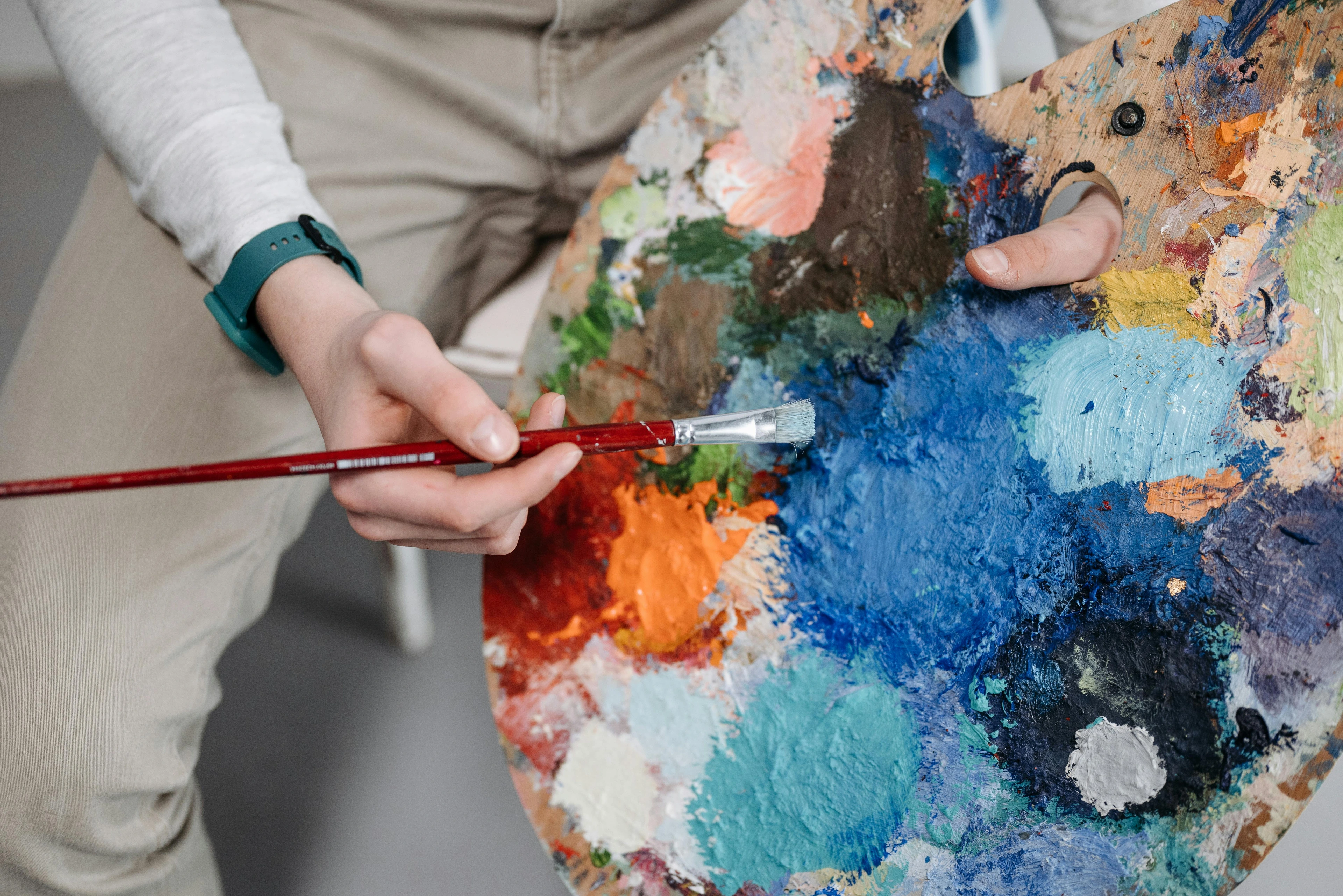
Best Art Cities: Top Destinations for Art Lovers & Travel Guide
Explore the world's best art cities through a personal lens. Discover top museums, iconic masterpieces, vibrant gallery districts, street art, and practical tips for planning your art-focused travel, infused with personal reflections and insights. Now expanded with more cities, interests, and planning details.
Discover the Best Art Cities: Top Destinations for Art Lovers & Art Travel
Exploring cities renowned for their artistic heritage offers a unique window into human creativity and cultural expression. These urban centers transcend their roles as mere geographical locations, transforming into vibrant hubs where artistic endeavors flourish and inspire. The allure of these destinations lies not only in the masterpieces they house but also in the rich tapestry of history, innovation, and cultural dynamism that permeates their very essence. For those who appreciate the power of art, a journey to these cities is an opportunity to immerse themselves in a world where imagination takes tangible form, leaving an indelible mark on the traveler's soul. Honestly, sometimes I think about these places when I'm stuck in my studio, just dreaming of walking those streets again, seeing something new that sparks an idea. It's like a reset button for the creative mind, a vital source of art inspirations. Seeing the sheer volume and variety of human creativity on display in these hubs is like plugging directly into a global energy source – it refuels me in ways nothing else can.
So, what is it that makes a city feel like an "art city"? For me, it's about looking at its museums (not just the big ones, but the quirky, specific ones too), galleries (from the blue-chip powerhouses to the tiny, artist-run spaces), street art (the ever-changing, democratic canvas), artist communities (where the work is actually made), history (the layers that inform the present), and overall cultural infrastructure (the cafes, the bookstores, the public spaces that nurture creativity). It's not just about having a few famous paintings; it's about a living, breathing ecosystem where art is valued, created, and accessible. Think of it like a complex garden where different plants (artists, institutions, movements) thrive together, creating something beautiful and dynamic. While subjectivity plays a role, certain cities consistently rise to the top in global discussions. Think about it – a city isn't just a backdrop for art; it actively shapes it, and the art, in turn, shapes the city. It's a beautiful, messy feedback loop.
World-Leading Art Cities: Essential Destinations
Ready to dive into some of the most incredible artistic landscapes the world has to offer? This section delves into cities consistently ranked among the world's most important art destinations, offering unparalleled experiences across various eras and styles. These aren't just places with museums; they are ecosystems where art feels truly alive. Visiting them feels less like ticking boxes and more like stepping into different dimensions of human history and imagination. While this list covers the most famous, remember the "ultimate" art city is subjective and depends entirely on what speaks to your soul.
1. Paris, France
The historical heart of Western art for centuries, Paris retains immense significance, particularly for its pivotal role in Impressionism and Modern Art. You really feel the weight of art history just walking around here. It's in the air, the architecture, the light. Sometimes it's almost intimidating, like, how can I possibly add anything to this legacy? But then you see something new, something contemporary, and you realize art is always evolving, even here. The city's unique light, captured by the Impressionists, still feels magical, especially near the Seine.
- Key Art Highlights:
- The Louvre Museum (home to Leonardo da Vinci's Mona Lisa, the Venus de Milo, vast collections from antiquity to mid-19th C. – plan your visit, it's immense! Seriously, trying to see it all in one go is a form of self-inflicted torture. Pick a wing, maybe two, and accept you'll need to come back... or just live there).
- Musée d’Orsay (world's best Impressionist & Post-Impressionist collection in a stunning former train station – the building itself is a masterpiece. The light in there is just perfect for those paintings, illuminating works by Monet, Renoir, Degas, and Van Gogh).
- Centre Pompidou (leading Modern & Contemporary art museum with iconic, if sometimes divisive, inside-out architecture and fantastic city views. It always feels a bit rebellious, which I appreciate).
- Musée Picasso (housed in the beautiful Hôtel Salé, focusing on Picasso's work).
- Musée Rodin (with its charming sculpture garden – perfect on a sunny day. Seeing Rodin's The Thinker outside feels different, somehow more grounded).
- Numerous commercial galleries in Le Marais (a mix of established and emerging, great for wandering) and Saint-Germain-des-Prés (historically significant, often more traditional). Le Marais, in particular, has a dynamic contemporary scene.
- Don't forget smaller gems like the Musée Marmottan Monet (housing the world's largest Monet collection, including Impression, soleil levant) and the Orangerie (Monet's breathtaking Water Lilies – a truly immersive experience, designed to be seen in that space).
Paris is a quintessential European art city. For more, see our guide to the best galleries in Paris. It's a must for anyone wanting a deep dive into the foundations of modern Western art.

2. New York City, USA
From the historical depth of the Met to the cutting edge of contemporary spaces, NYC is often considered the contemporary art world's capital. It boasts an incredible density of world-class museums and the globe's largest commercial gallery scene. The energy here is palpable; art feels immediate and ever-changing. It's a city that constantly reinvents itself, and its art scene reflects that restless, dynamic spirit. Walking through Chelsea on a gallery opening night is an experience in itself – a chaotic, exciting mix of people, art, and free wine. It's a place where you can truly feel the pulse of the contemporary art meaning.
- Key Art Highlights:
- The Metropolitan Museum of Art (The Met) (encyclopedic collection – you could spend days here and still not see it all. It's overwhelming in the best possible way, covering everything from ancient artifacts to European painting and modern masters).
- Museum of Modern Art (MoMA) (premier modern art, constantly impactful exhibitions, featuring iconic works like Van Gogh's Starry Night and Picasso's Les Demoiselles d'Avignon. MoMA always feels like it's pushing boundaries).
- Guggenheim Museum (iconic Frank Lloyd Wright architecture, modern art – walking the spiral ramp is an experience in itself. Just try not to get dizzy looking down. Home to significant works by Kandinsky and others).
- Whitney Museum of American Art (American art focus, great views from its Meatpacking District location. The building is fantastic, and the focus on American art gives it a distinct identity).
- New Museum (cutting-edge contemporary, often challenging. This is where you go to see what's really new and sometimes uncomfortable).
- Hundreds of galleries concentrated in Chelsea (huge concentration of blue-chip and mid-tier galleries in converted warehouses – this is where you see the big names), the Lower East Side (LES) (historically more gritty and emerging, now a mix of younger and established spaces), and Tribeca (a growing hub). Visiting these districts is key to understanding the list of art galleries in the city.
- Significant street art in areas like Bushwick (Brooklyn). The Bushwick Collective is a must-see for large-scale murals.
See our detailed guide to NYC's best galleries & museums. It's a leader among the best art cities in the US. If you crave the cutting edge and sheer volume, NYC is your spot.
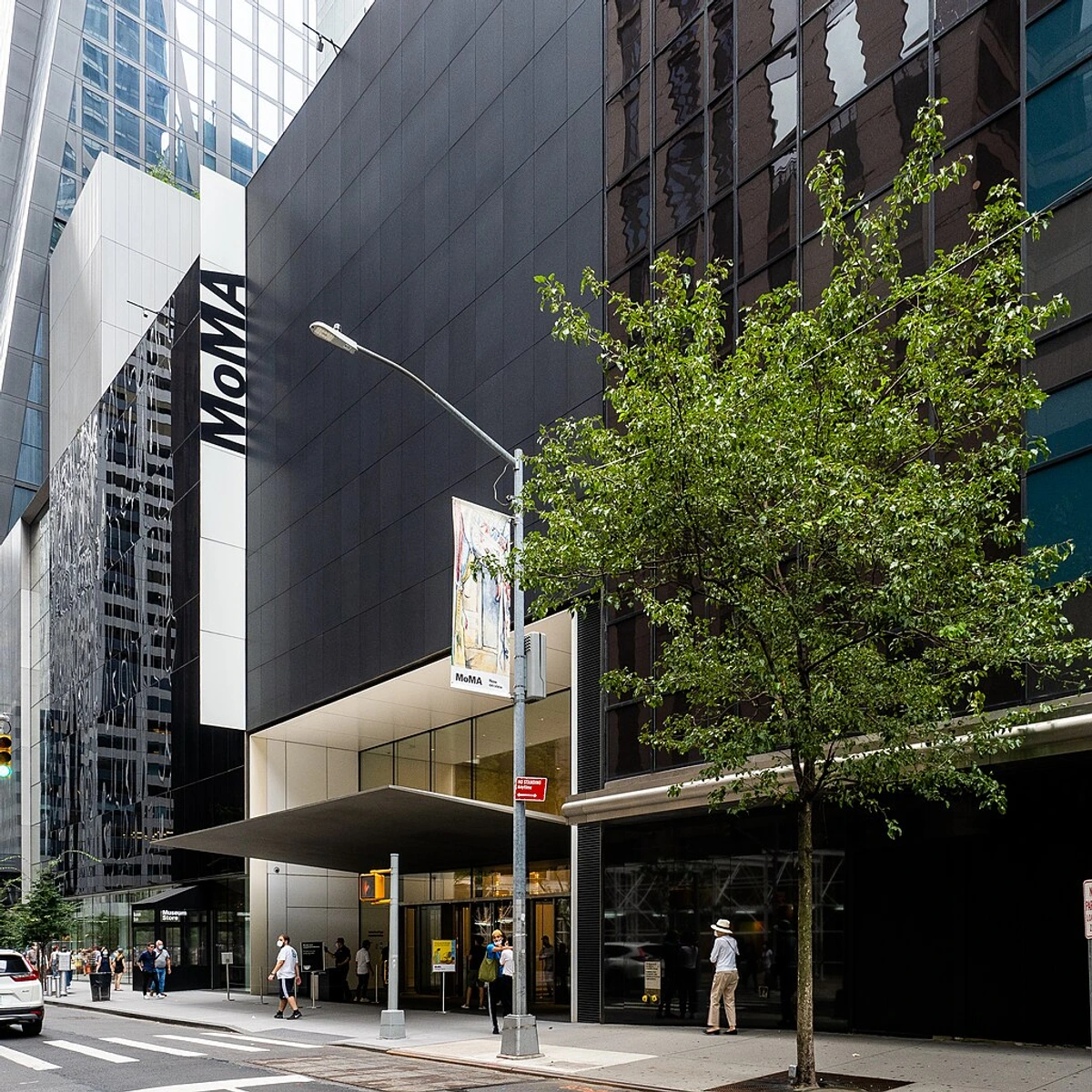
3. London, UK
A global hub offering immense historical depth alongside a vibrant contemporary scene, with many major museums offering free general admission – a huge plus! It feels like a city constantly layering new art onto its ancient foundations. You can see Roman artifacts in the morning and cutting-edge video art in the afternoon, all for free. It's incredible access, and honestly, makes planning a lot less stressful on the wallet. The contrast between the historical collections and the dynamic contemporary scene is particularly striking here.
- Key Art Highlights:
- The National Gallery (comprehensive European painting 13th C.-1900 in Trafalgar Square. Seeing Van Gogh's Sunflowers, Turner's seascapes, or works by Leonardo da Vinci, Michelangelo, and Rembrandt is just... wow).
- Tate Modern (international modern & contemporary in a commanding former power station – the Turbine Hall installations are often spectacular. It's a space that demands big art, featuring works by Picasso, Dalí, Rothko, and countless contemporary artists).
- British Museum (global antiquities & cultural artifacts – the Rosetta Stone, Parthenon sculptures. It's a journey through world history, not just art).
- Victoria and Albert Museum (V&A) (world-leading decorative arts & design – an incredible treasure trove. You could get lost in here for days, finding inspiration in everything from fashion to furniture).
- Tate Britain (historical & contemporary British art – the sister institution to Tate Modern, focusing on UK art).
- Thriving gallery districts in Mayfair (established, high-end, home to major international galleries), Shoreditch (trendy, contemporary, street art nearby, more experimental spaces), and Soho (diverse mix). Mayfair is where you'll find the big names and famous art galleries, while Shoreditch offers a grittier, more local art galleries feel.
- Plus, don't miss the Saatchi Gallery for contemporary art or the Wallace Collection (intimate setting for Old Masters and decorative arts in a beautiful townhouse).
- London's street art scene, especially in East London, is world-class. Just wander around Shoreditch and keep your eyes peeled.
Explore more in our guide to London's best galleries. London is fantastic if you want immense variety and accessible major collections.
4. Florence, Italy
The undisputed cradle of the Renaissance, Florence offers an immersive journey into this pivotal artistic era, with masterpieces integrated into the city's fabric. Walking through Florence feels like stepping back in time; art isn't just in museums, it is the city. Every corner seems to hold a sculpture, a fresco, or a building designed by a master. It's a city that makes you understand why the Renaissance was such a big deal. Seeing the art here, in the city where it was created, adds a layer of context that reproductions can never capture. You might even stumble upon artisan workshops continuing ancient traditions.
- Key Art Highlights:
- Uffizi Gallery (unrivaled Italian Renaissance painting: Botticelli's Birth of Venus & Primavera, Leonardo da Vinci's Annunciation, works by Michelangelo, Raphael, Titian – book way in advance! The queues are legendary for a reason).
- Galleria dell’Accademia (Michelangelo's David – truly breathtaking in person, plus other sculptures and paintings. Seeing David is one of those moments that just stops you in your tracks).
- Palazzo Pitti (multiple museums including the Palatine Gallery with masterpieces by Raphael and Titian, plus Boboli Gardens).
- Bargello Museum (Renaissance sculpture, including Donatello's David).
- Brunelleschi's Dome & Giotto's Campanile (architectural marvels offering incredible views. Climbing the Duomo is a workout, but the view is worth every step).
- Also explore the Medici Chapels and the frescoes in the Brancacci Chapel (by Masaccio and Masolino, crucial for understanding Renaissance painting).
Essential for Renaissance enthusiasts. Our guide to Florence's best galleries has more. Florence is your destination if you want to breathe the air of the Renaissance masters.
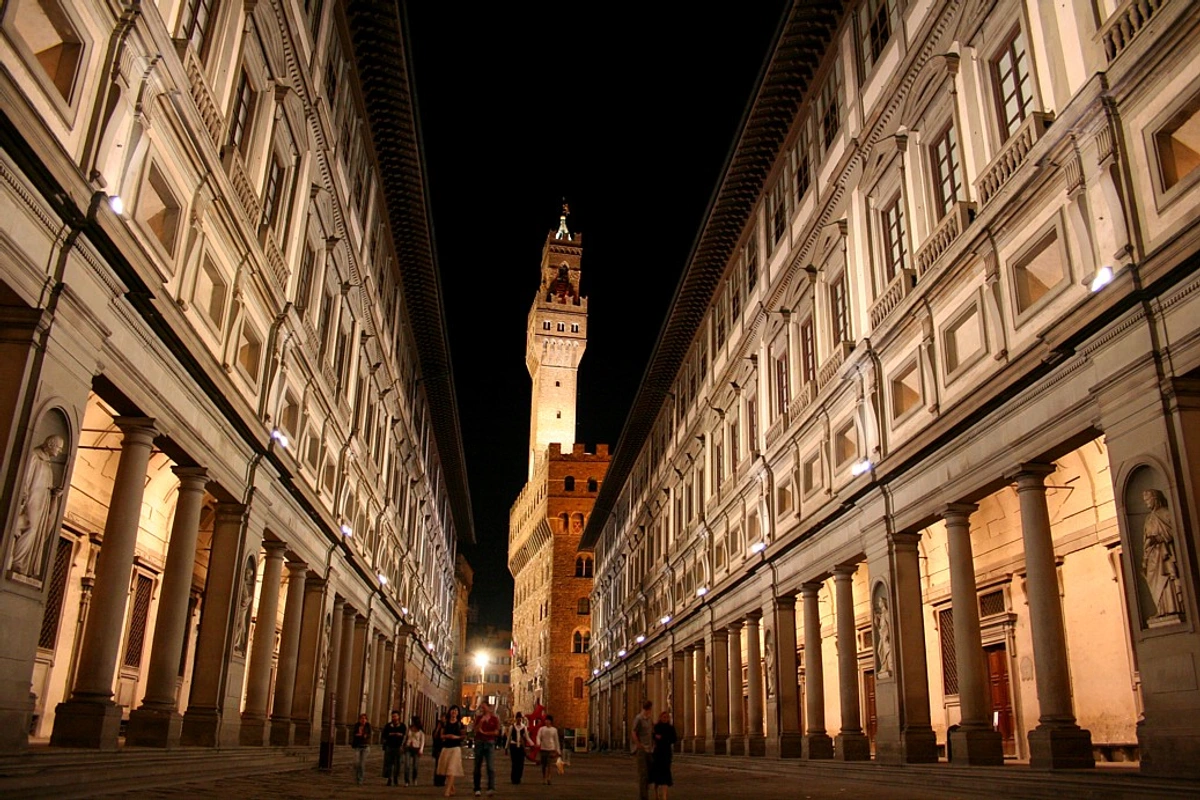
5. Rome, Italy
Continuing the Italian journey, Rome is a city where art history unfolds across millennia, from ancient wonders to Baroque masterpieces and beyond, often displayed in breathtaking historical settings. Rome overwhelms the senses in the best way possible – history and art collide at every turn. You can see a Caravaggio in a church, then walk past a 2000-year-old ruin. It's a constant reminder of how long people have been making things, and how little some things change (like crowds). Honestly, sometimes I feel like I'm tripping over ancient history while trying to find a specific Baroque fountain. The Vatican Museums are an absolute must-see, but prepare for crowds; the Sistine Chapel is incredible, but the sheer volume of people can make it feel less spiritual and more like a very slow-moving queue. The Borghese Gallery, however, is one of my favorite museums anywhere; the scale is manageable, and the art is sublime.
- Key Art Highlights:
- Vatican Museums (including Michelangelo's Sistine Chapel ceiling & Last Judgment, Raphael Rooms – an absolute must-see, but prepare for crowds. The Sistine Chapel is incredible, but the sheer volume of people can make it feel less spiritual and more like a very slow-moving queue).
- Borghese Gallery and Museum (Bernini sculptures, Caravaggio paintings in an intimate villa setting – booking is absolutely essential, often months ahead. This is one of my favorite museums anywhere; the scale is manageable, and the art is sublime).
- Colosseum & Roman Forum (Ancient Roman art & architecture – experience the scale of the empire. It's humbling to stand where so much history happened).
- Capitoline Museums (world's oldest public museum, stunning ancient sculpture).
- Numerous churches filled with art treasures (e.g., Caravaggio in San Luigi dei Francesi and Sant'Agostino, Michelangelo's Moses in San Pietro in Vincoli). Rome was a key center for the dramatic, emotional art of the Baroque period, often tied to the Counter-Reformation.
- For a contemporary contrast, check out the MAXXI National Museum of 21st Century Arts (a striking Zaha Hadid building).
Find more in Rome's best galleries guide. Rome is perfect if you want art history layered across millennia, from ancient to Baroque.
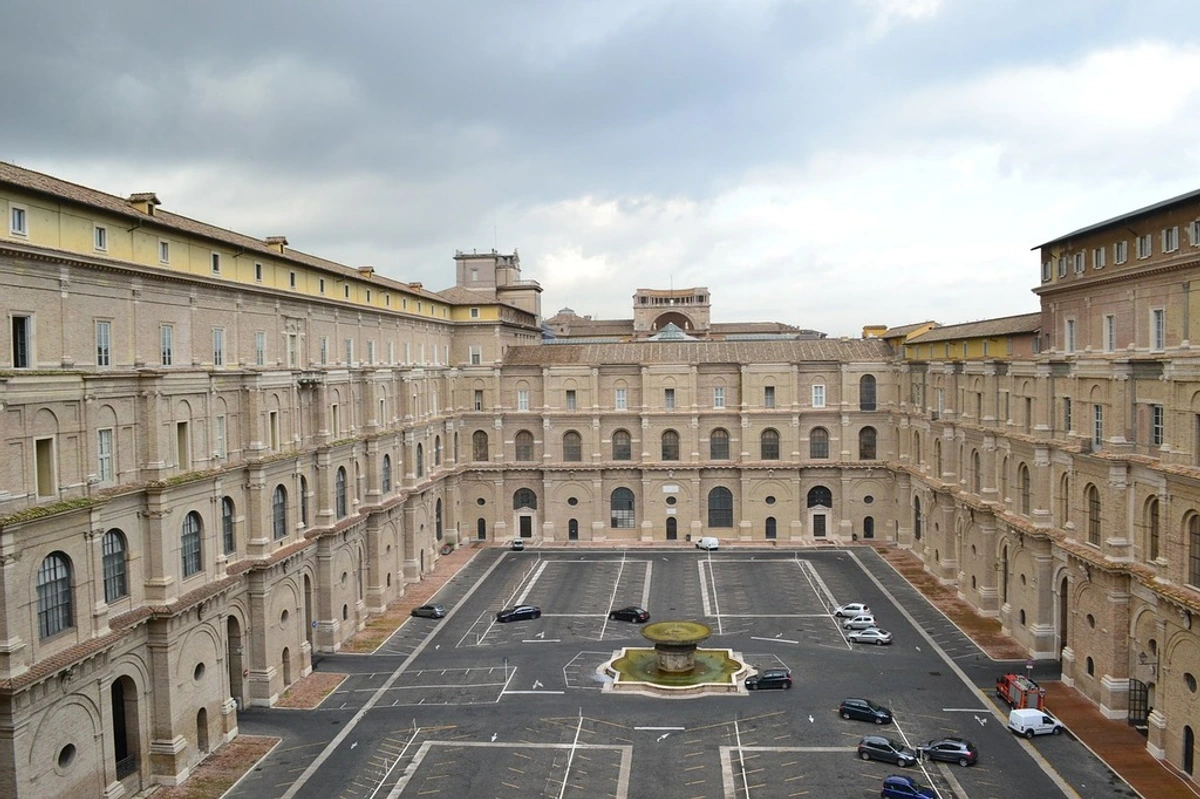
6. Berlin, Germany
Moving north, Berlin is a city defined by its complex history, resilience, and dynamic contemporary art scene, known for its affordability (relative to other capitals) and thriving artist community. Berlin feels raw, creative, and constantly reinventing itself. There's a sense of freedom and experimentation here that's really exciting. It's less about polished history and more about the vibrant, sometimes gritty, present. The relatively lower cost of living compared to Paris or London has allowed a large artist community to flourish, contributing to its dynamic scene.
- Key Art Highlights:
- Museum Island (a UNESCO site comprising five museums: Pergamon Museum - currently partly closed for long renovation, Neues Museum - Nefertiti Bust, Alte Nationalgalerie - 19th C. art, Bode Museum - sculpture, Pergamon Panorama - temporary exhibition). It's a lot to take in, so pick your focus!
- Gemäldegalerie (Old Masters, superb collection).
- Hamburger Bahnhof (Contemporary art in a former train station. Great space for large installations).
- East Side Gallery (preserved Berlin Wall section with iconic murals – a powerful open-air gallery. It's a potent reminder of history and the power of art as expression).
- Vibrant street art culture (explore Kreuzberg and Friedrichshain, consider a tour).
- Numerous contemporary galleries in Mitte (central, varied) and Kreuzberg (often more alternative, reflecting the city's counter-culture roots).
- Also notable: the Boros Collection (contemporary art in a WWII bunker, appointment needed – a truly unique setting), Neue Nationalgalerie (Mies van der Rohe building, 20th C. art).
A key European art city. See our guide to Berlin's best galleries. Berlin is ideal if you're drawn to contemporary, experimental art and a city with a powerful recent history.
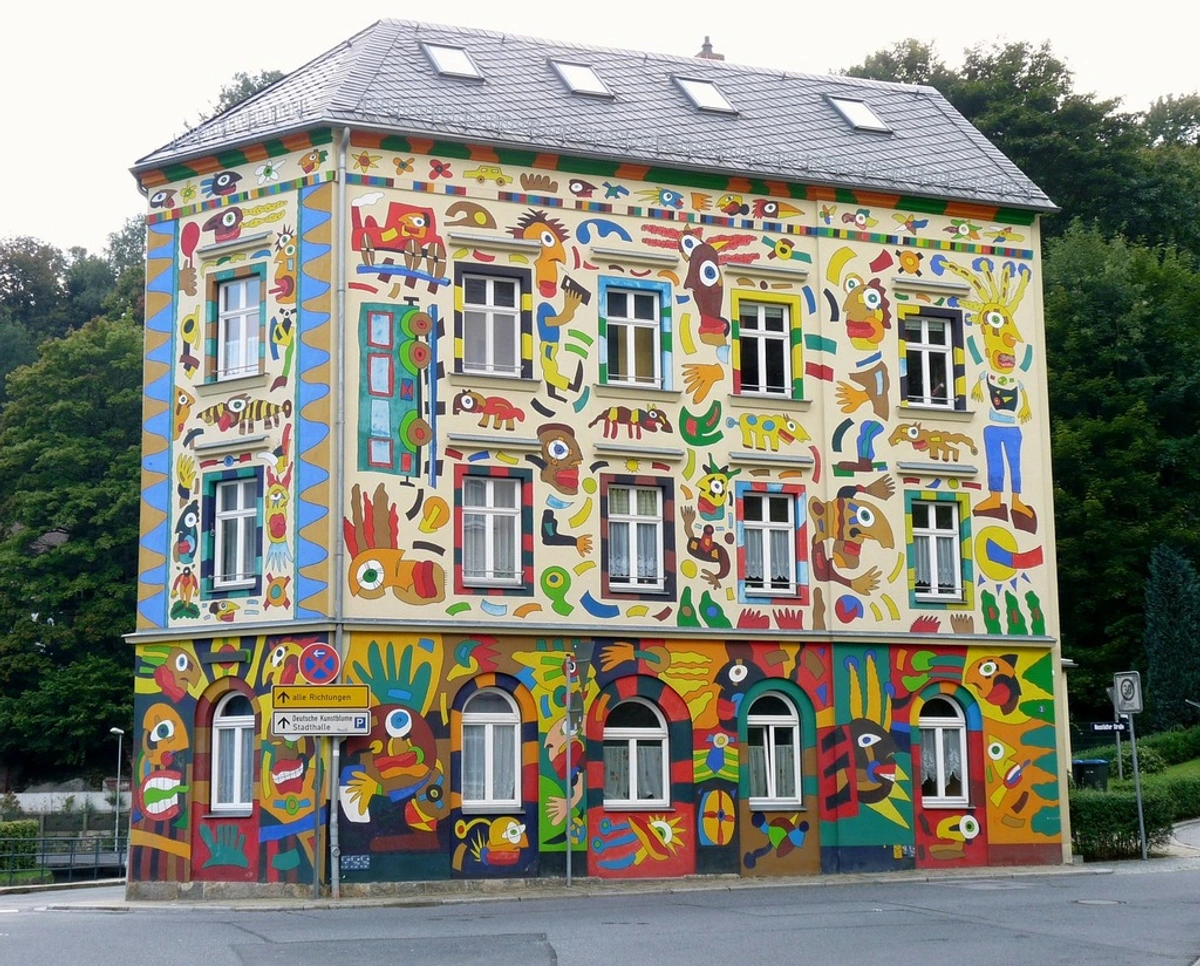
7. Amsterdam, Netherlands
Capital of the Dutch Golden Age, Amsterdam offers world-class museums dedicated to this era, alongside significant modern and contemporary institutions and a lively gallery scene. It's charming, walkable, and packed with artistic gems. The scale feels very human compared to some other capitals, and the art is deeply woven into the national identity. Plus, cycling past beautiful canal houses is a pretty great way to get between museums. Seeing the Dutch Masters here, in the city where they lived and worked, adds a special dimension to the experience. The light, the canals, the architecture – it all feels connected to the art.
- Key Art Highlights:
- Rijksmuseum (Dutch Masters: Rembrandt's Night Watch, Vermeer's Milkmaid – beautifully renovated. Seeing The Night Watch in person is just... wow. The scale, the detail, the drama).
- Van Gogh Museum (world's largest collection of Vincent van Gogh's works – book ahead! Essential for understanding the man behind the sunflowers, including iconic pieces like Sunflowers and The Potato Eaters).
- Stedelijk Museum (Modern/Contemporary art & design, De Stijl).
- Anne Frank House (poignant historical site – booking essential, far in advance. Not strictly an art museum, but a powerful cultural experience).
- Numerous contemporary galleries in the Jordaan (charming canals, smaller galleries) and city center.
- Consider the Moco Museum (Banksy, contemporary/street art focus) or exploring the unique architecture of the canal houses themselves.
Find more Dutch hubs in our best art cities in the Netherlands guide. And if you're ever near 's-Hertogenbosch, my own base, check out the Zen Museum Den Bosch for a different kind of art experience. Amsterdam is ideal for immersing yourself in the Dutch Masters and enjoying a beautiful, walkable city.
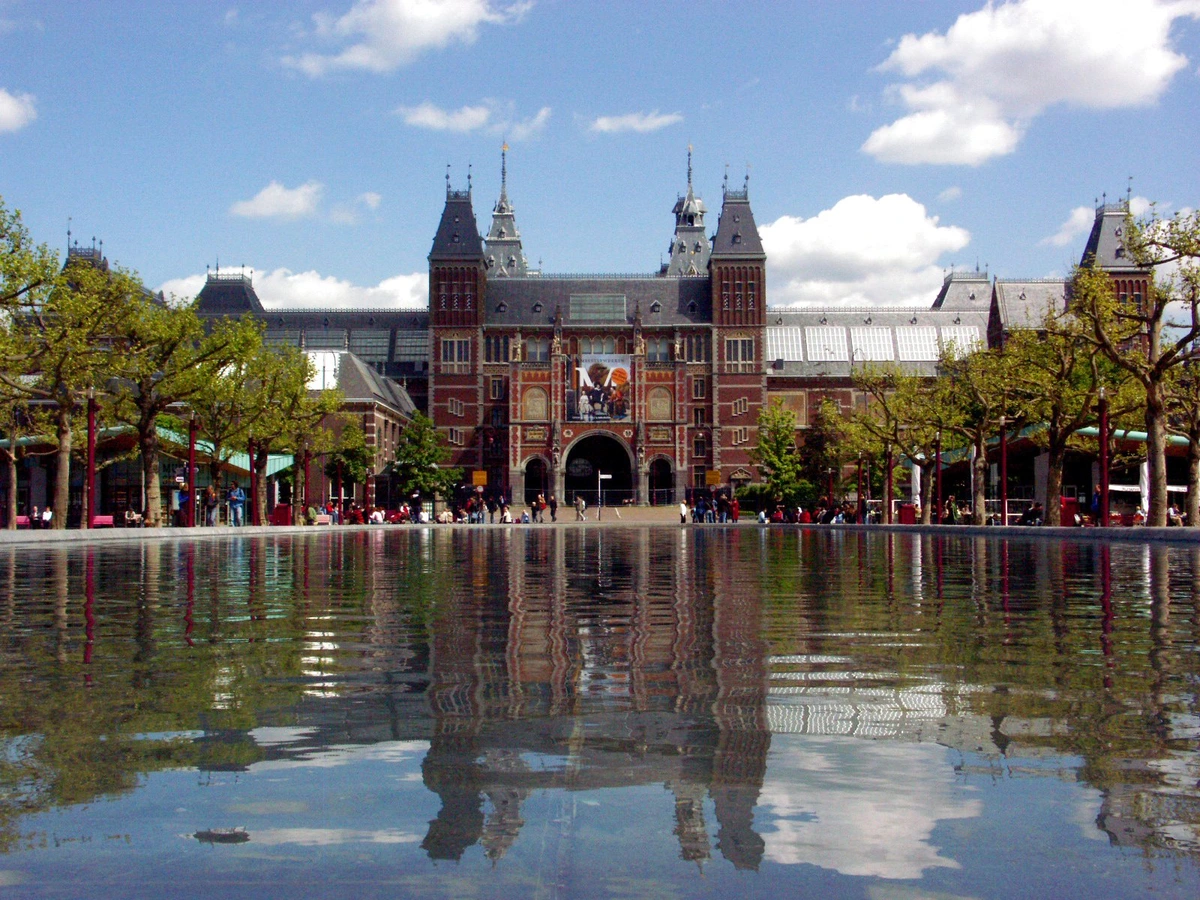
8. Madrid, Spain
Home to the "Golden Triangle of Art," Madrid boasts three world-class museums within walking distance, covering a vast spectrum of Western art. It's a city that balances regal history with a vibrant, energetic street life. You can spend the morning with Velázquez and Goya, then the afternoon with Picasso and Dalí, and the evening enjoying tapas and flamenco. It's a city that knows how to live, and that energy feeds its art. The concentration of masterpieces in the Prado, Reina Sofía, and Thyssen is truly remarkable.
- Key Art Highlights:
- Prado Museum (Spanish Masters: Velázquez's Las Meninas, Goya's Third of May 1808 & Black Paintings, El Greco. Seeing Las Meninas is like looking into a puzzle box of art history).
- Museo Reina Sofía (Modern/Contemporary: Picasso's monumental Guernica, works by Dalí, Miró – essential viewing. Guernica is just... overwhelming in its power).
- Thyssen-Bornemisza National Museum (impressive survey from Old Masters to 20th C., fills gaps between the other two).
- Royal Palace, vibrant cultural scene.
- Explore the CaixaForum Madrid (striking architecture, temporary exhibitions) and the Sorolla Museum (artist's charming former home and studio – a beautiful, light-filled space).
Madrid is a must for lovers of Spanish masters and a concentrated dose of European art history.
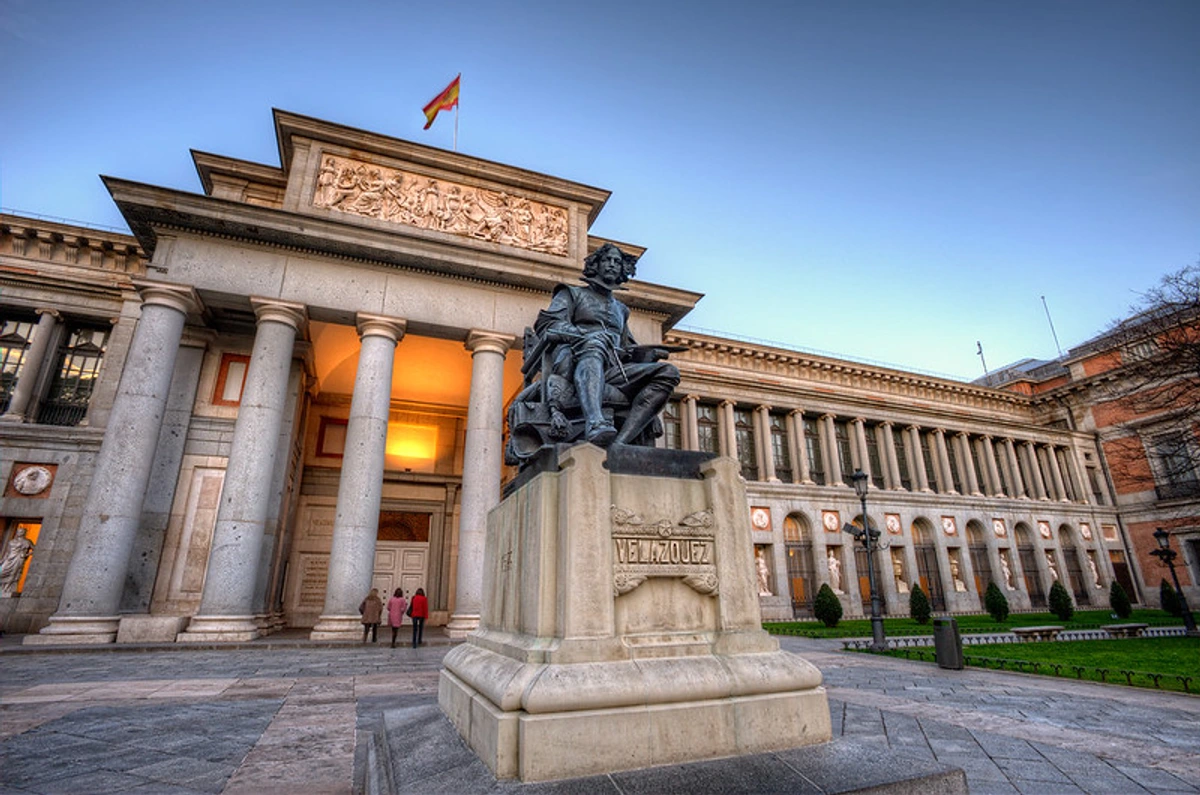
9. Tokyo, Japan
Shifting gears to Asia, Tokyo offers a fascinating blend of deep artistic tradition and hyper-modern contemporary culture, offering unique museum experiences and cutting-edge galleries. Tokyo dazzles with its contrasts – serene temples next to neon-lit installations. It's a city that constantly surprises you with its layers of history and futuristic vision. The art scene is just as multifaceted, from ancient scrolls to digital immersive worlds. It's a place where tradition and innovation coexist in fascinating ways.
- Key Art Highlights:
- Tokyo National Museum (largest collection of Japanese art & artifacts in Ueno Park).
- Mori Art Museum (contemporary art with stunning city views from Roppongi Hills Mori Tower – often open late. Great place to see international contemporary art with an amazing backdrop).
- National Art Center, Tokyo (major temporary exhibitions, striking architecture in Roppongi).
- teamLab Borderless/Planets (hugely popular immersive digital art experiences – book way ahead! It's less about traditional objects and more about pure sensory experience).
- Numerous galleries in districts like Ginza (upscale, established) and Roppongi (contemporary).
- Explore the Nezu Museum (pre-modern Japanese/East Asian art, beautiful garden) or the Ghibli Museum (requires advance booking, dedicated to the animation studio – a pilgrimage for animation fans).
A leader among the best art cities in Asia. See our guide to Contemporary Art in Tokyo. Tokyo is your city if you're fascinated by the intersection of ancient tradition and cutting-edge contemporary and digital art.
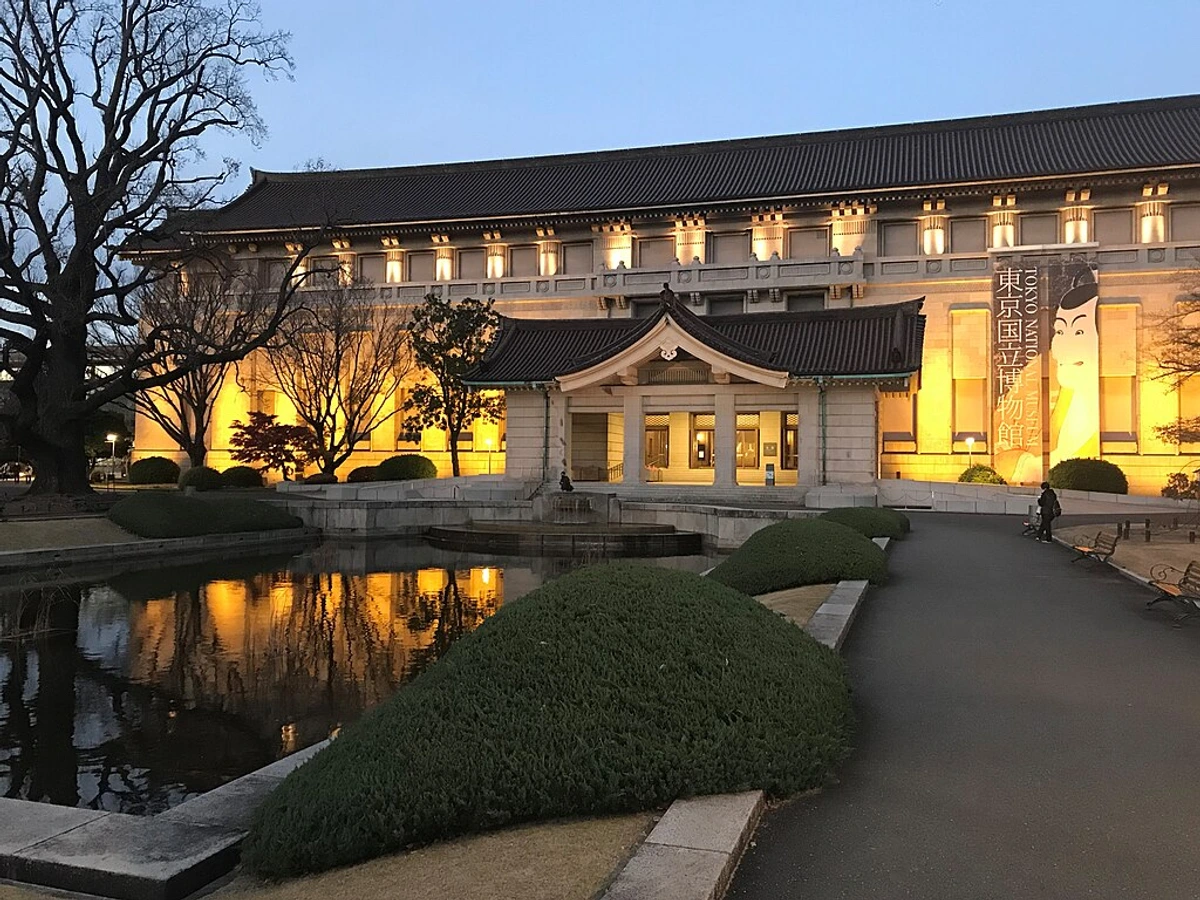
10. Vienna, Austria
Back in Europe, the elegant former imperial capital offers magnificent museums housing Habsburg treasures alongside legacies of Viennese Modernism (Klimt, Schiele) and a strong contemporary scene. Vienna breathes imperial history and artistic refinement. It's a city that feels grand and intellectual, with a slightly darker, more introspective side revealed in its Modernist art. Plus, the coffee house culture is perfect for sketching or just contemplating what you've seen. The contrast between the opulent historical collections and the intense, psychological works of the Viennese Modernists is particularly compelling.
- Key Art Highlights:
- Kunsthistorisches Museum (Art History Museum with immense Bruegel collection, Old Masters, Egyptian/Near Eastern Collection. The building itself is a palace for art).
- Belvedere (Upper Belvedere houses Austrian art, Klimt's The Kiss; Lower Belvedere for temporary exhibitions. Seeing The Kiss is another one of those iconic art moments).
- Leopold Museum (largest Egon Schiele collection, Austrian modernism in the MuseumsQuartier. Schiele's work is intense and raw, a stark contrast to Klimt's decorative style).
- Albertina (impressive prints & drawings, Monet to Picasso exhibition galleries).
- MuseumsQuartier (hub for contemporary art & culture, including mumok - Museum of Modern Art).
- Don't miss the Secession Building (Klimt's Beethoven Frieze) and explore the unique architecture of Hundertwasserhaus (a playful, colorful contrast to the imperial grandeur).
Vienna is ideal for lovers of imperial grandeur, Viennese Modernism, and a refined cultural experience.
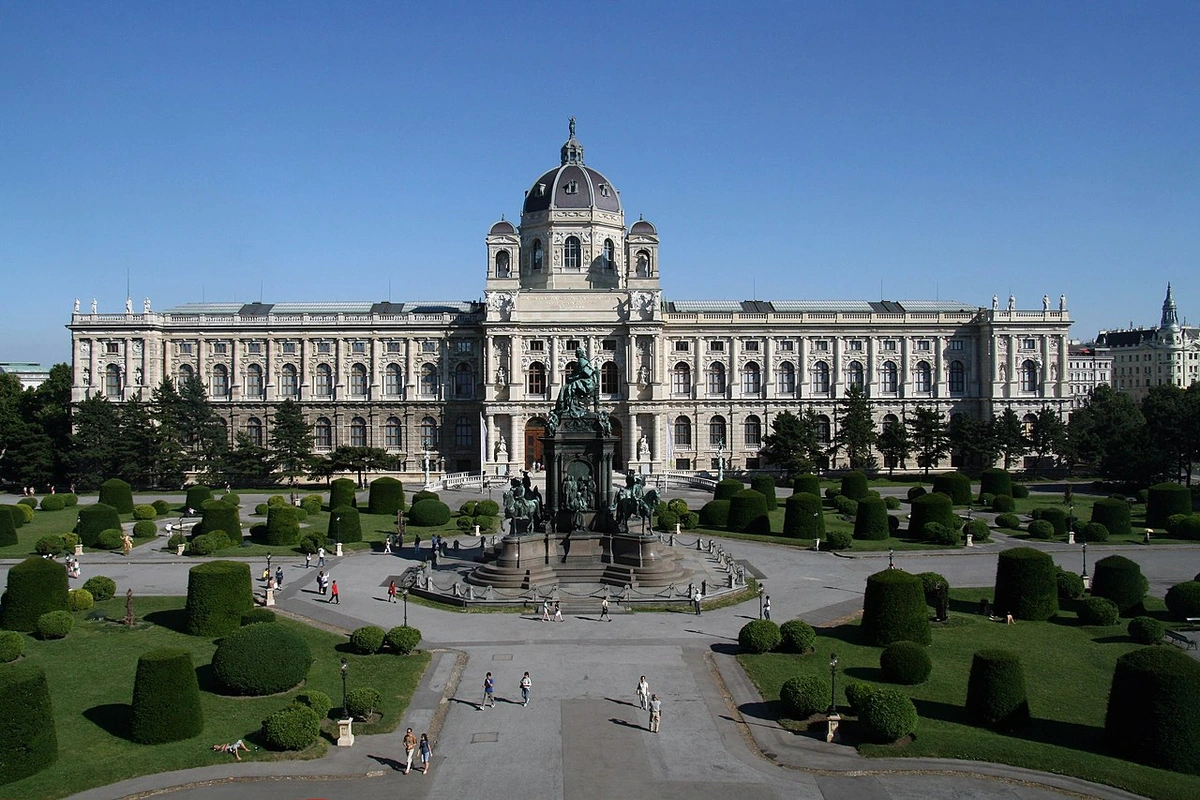
11. St. Petersburg, Russia
Home to the vast State Hermitage Museum, St. Petersburg offers an unparalleled journey through art history within opulent imperial palaces. The sheer scale and grandeur are astonishing. It's a city built on a vision of bringing European culture to Russia, and the Hermitage is the ultimate expression of that ambition. I visited years ago, and the memory of walking through those vast, gilded rooms, surrounded by masterpieces by Rembrandt, Leonardo da Vinci, and the Impressionists, still feels a bit surreal. It's physically impossible to see it all, so pick your battles! (Note: Due to the ongoing geopolitical situation, travel to Russia faces significant restrictions and advisories from many countries. Accessibility and safety should be thoroughly researched before considering any travel plans).
- Key Art Highlights:
- State Hermitage Museum (one of the world's largest and oldest museums, incredible Western European masters, antiquities, located primarily in the magnificent Winter Palace – requires multiple days to even skim. It's physically impossible to see it all, so pick your battles!).
- Russian Museum (largest collection of Russian art, from icons to avant-garde).
St. Petersburg is for those seeking imperial grandeur and one of the world's largest art collections.

12. Barcelona, Spain
A city where art and architecture intertwine, most famously through the unique works of Antoni Gaudí, complemented by significant museums dedicated to key 20th-century artists. Barcelona's artistic identity is uniquely playful and organic. Gaudí's work is everywhere, blurring the lines between building and sculpture, nature and fantasy. It's a city that doesn't take itself too seriously, but is serious about creativity. Gaudí's buildings often feel like living sculptures, a truly unique artistic vision.
- Key Art Highlights:
- Architectural works of Antoni Gaudí (the still-unfinished Sagrada Família, whimsical Park Güell, fantastical Casa Batlló and Casa Milà/La Pedrera – book all Gaudí sites well in advance! Seriously, don't just show up expecting to get in).
- Museu Picasso (focus on Picasso's formative years spent in the city).
- Fundació Joan Miró (dedicated to Miró's work, striking building by Josep Lluís Sert on Montjuïc hill).
- MACBA (Museum of Contemporary Art Barcelona in the Raval).
- Exploring the historic Gothic Quarter (with its Cathedral and hidden plazas).
- Also consider the Fundació Antoni Tàpies and the MNAC (Museu Nacional d'Art de Catalunya, for Catalan art).
Barcelona is ideal for those who love architecture as art and the vibrant legacies of Picasso and Miró.
13. Athens, Greece
The birthplace of democracy and Western philosophy, Athens is also a foundational city for Western art history, particularly for its incredible legacy of ancient Greek art and architecture. While its contemporary scene is growing, the power here lies in connecting with the roots of so much that came after. Walking among the ancient stones feels like touching the very beginning of a long, complex story. It's a humbling experience that puts all subsequent art history into perspective.
- Key Art Highlights:
- The Acropolis & Parthenon (iconic ancient architecture and sculpture – the ultimate symbol of classical Greece. Seeing it in person, despite the scaffolding, is breathtaking).
- Acropolis Museum (stunning modern museum housing artifacts found on the Acropolis, including the Caryatids and Parthenon Marbles – the building itself is designed to align with the ancient site).
- National Archaeological Museum (vast collection covering Greek art from prehistory to late antiquity – you could spend days here).
- Museum of Cycladic Art (focus on Cycladic, ancient Greek, and Cypriot art).
- Explore the ancient Agora and Temple of Olympian Zeus for more architectural context.
- For a contemporary contrast, check out the National Museum of Contemporary Art Athens (EMST).
Essential for understanding the origins of Western art. Athens is your destination if you want to connect with the foundational roots of Western art and architecture.
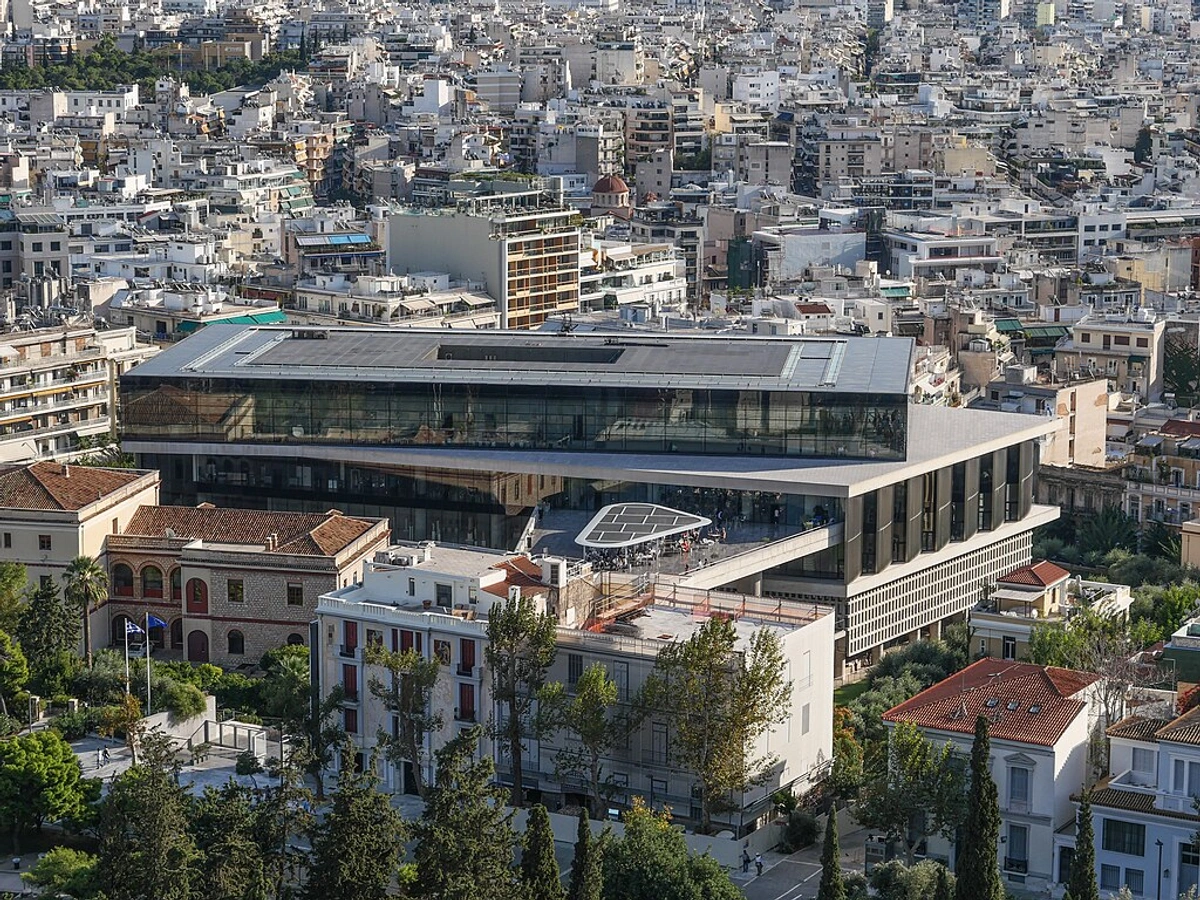
14. Mexico City, Mexico
Crossing the Atlantic again, Mexico City is a vibrant metropolis where ancient history, revolutionary muralism, and a thriving contemporary art scene collide. It's a city of incredible scale and energy, with art deeply embedded in its public spaces and cultural identity. The layers of history here are palpable, from Aztec ruins to colonial architecture and modern skyscrapers, all influencing the art that is made and shown. The muralism movement, in particular, is a powerful and uniquely Mexican art form, using public walls to tell stories of history, revolution, and identity.
- Key Art Highlights:
- Museo Nacional de Antropología (world-class collection of pre-Hispanic art and artifacts – essential for understanding the deep roots of Mexican culture and art).
- Palacio de Bellas Artes (stunning building housing murals by Diego Rivera, David Alfaro Siqueiros, and José Clemente Orozco, plus temporary exhibitions and performances).
- Museo Frida Kahlo (Casa Azul) (the iconic artist's former home and studio – a deeply personal and moving experience. Book far in advance!).
- Museo Soumaya (striking modern architecture, diverse collection including European masters like Rodin and Mexican art).
- Explore the Centro Histórico for historical architecture and murals, and neighborhoods like Roma and Condesa for contemporary galleries and street art.
- Consider a visit to the Museo Dolores Olmedo (housing significant collections of Frida Kahlo and Diego Rivera in a beautiful setting).
Mexico City is a major hub for contemporary art in Spanish-speaking countries. It's the place to go for powerful muralism, iconic 20th-century Mexican artists, and deep cultural history.
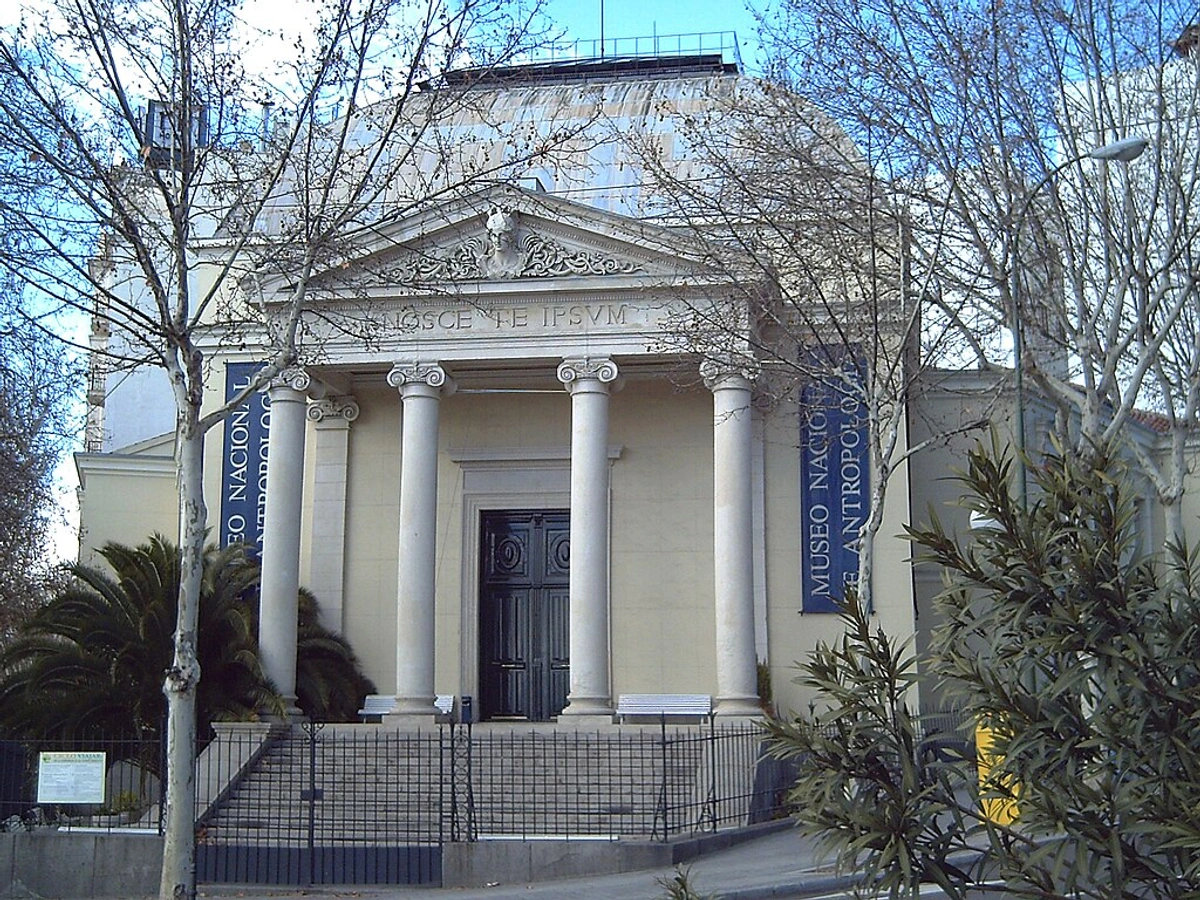
Major Recurring International Art Events
Beyond permanent collections, the art world revolves around major recurring events. Timing your trip to coincide with one (if your budget and tolerance for crowds allow) can offer an unparalleled snapshot of the global art scene. Be aware, though – accommodation prices skyrocket! It's like the art world descends, and suddenly that tiny hotel room costs more than a small painting. But the energy is incredible. This is a selection of some of the most influential international events. Attending these, even just to look, can be incredibly inspiring for an artist, offering a concentrated dose of current trends and market dynamics. I've been to a few, and the sheer volume of work and people is something you have to experience to believe. It's exhausting, exhilarating, and sometimes completely overwhelming.
It's worth noting the difference between a biennial or triennial and an art fair. A biennial (every two years) or triennial (every three years) is typically a large-scale, curated exhibition showcasing contemporary art, often with a specific theme or focus, spread across various venues in a city. An art fair, on the other hand, is primarily a commercial event where galleries rent booths to sell artwork to collectors and the public. Both offer unique ways to see a lot of art, but one is about market discovery and sales, the other about curated ideas and perspectives.
- Venice Biennale (Venice, Italy): Held in odd-numbered years (Art) and even-numbered years (Architecture). Arguably the most prestigious international contemporary art exhibition, taking over the city. It's less a fair, more a sprawling, city-wide exhibition that can be overwhelming but also incredibly rewarding.
- Art Basel (Basel, Switzerland): Annually in June. The original and perhaps most influential contemporary art fair, attracting top galleries and collectors worldwide. Sister fairs in Miami Beach (December) and Hong Kong (March). This is where the serious buying and selling happens, but it's also fascinating for people-watching and seeing a huge volume of high-end art in one place.
- Frieze Art Fairs (London, UK; New York, USA; Los Angeles, USA; Seoul, South Korea): Major contemporary art fairs held annually in their respective cities, often with a focus on cutting-edge work. Frieze London (October) also includes Frieze Masters (historical art). These feel a bit more accessible than Art Basel sometimes, but still very much part of the global market machine.
- documenta (Kassel, Germany): Held only every five years. A highly influential exhibition of contemporary art known for its critical and often political perspectives. This is the deep dive, the intellectual heavyweight. It's not about selling; it's about ideas.
- São Paulo Biennial (São Paulo, Brazil): Held in even-numbered years. The most important biennial in the Southern Hemisphere, focusing on art from Latin America and the Global South. A vital platform for voices and perspectives you might not see elsewhere.
- Whitney Biennial (New York City, USA): Held in even-numbered years at the Whitney Museum. A key survey of contemporary American art. Always sparks debate and highlights current trends in the US.
- TEFAF (Maastricht, Netherlands; New York, USA): The European Fine Art Fair, renowned for its high quality across fine art, antiques, and design, with major fairs in Maastricht (March) and New York (May & Fall). If you love Old Masters, antiques, and incredibly high standards of presentation, TEFAF is the place.
Exploring these events? Our guide on visiting art fairs for buyers offers some tips, though they're fascinating even if you're just looking! It's a whole ecosystem to navigate. Other notable events include photography festivals like Les Rencontres d'Arles or major design weeks like Milan Design Week, which offer different lenses on the creative world.
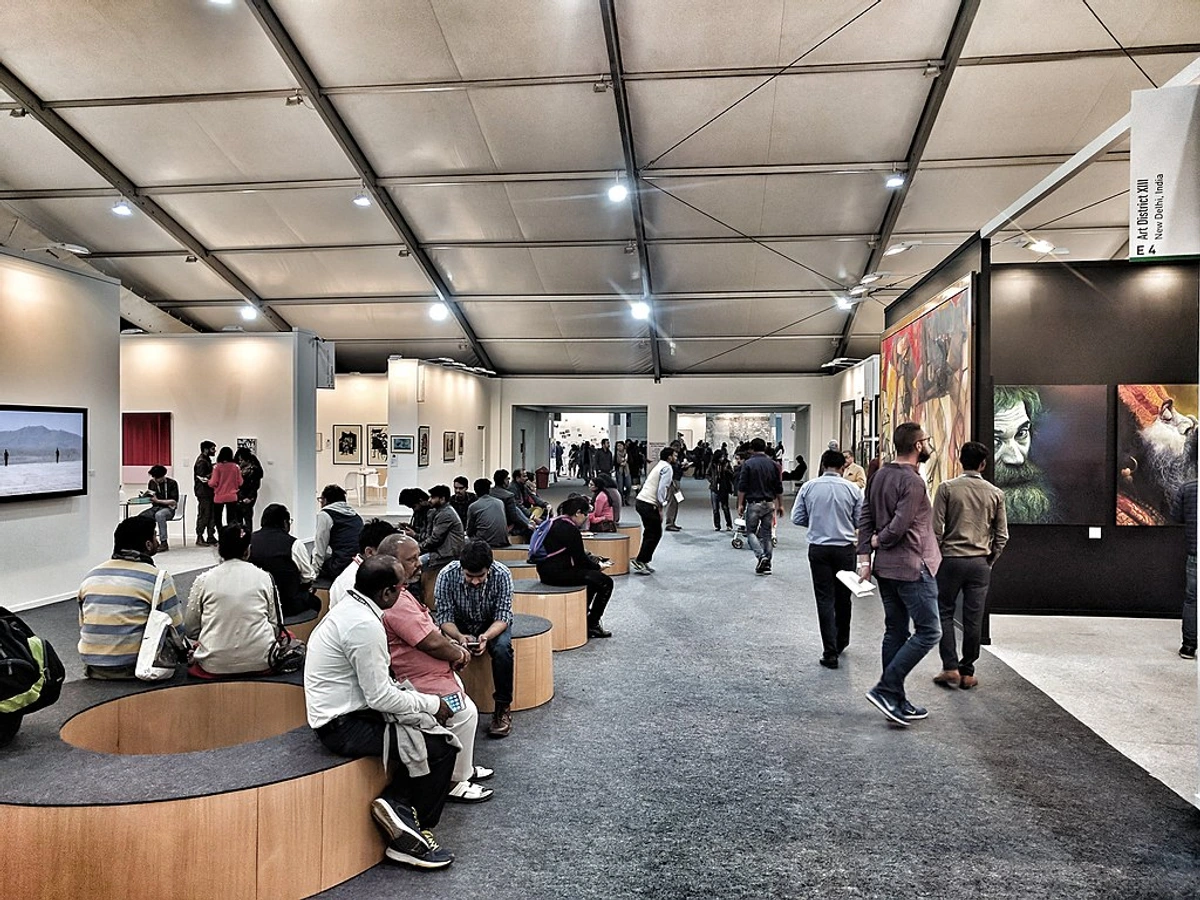
Planning Your Art-Focused Trip: More Than Just Pinning Cities on a Map
Choosing your next art destination involves more than just picking a city from the list. Thoughtful planning ensures a rewarding experience tailored to your interests. It's easy to get overwhelmed, trust me. I've definitely tried to cram too much in and ended up with serious museum fatigue. Learn from my mistakes! I once failed to book tickets for a major exhibition in advance and spent hours in a queue, only to be rushed through the show – never again.
Let's break down the planning process:
1. Define Your Primary Interests (Really Dig Deep)
Go deep! What kind of art truly makes your heart beat a little faster? Are you drawn to: Think about why certain art resonates with you – is it the subject matter, the technique, the emotion, the history? Understanding this 'why' is key.
- Ancient Civilizations: (Rome, London, Berlin, Mexico City, Athens, Cairo)
- Italian Renaissance: (Florence, Rome, Venice, Milan)
- Northern Renaissance / Dutch & Flemish Masters: (Amsterdam, The Hague, Antwerp)
- Spanish Golden Age: (Madrid, Seville)
- Baroque: (Rome, Vienna, St. Petersburg, Naples)
- Impressionism & Post-Impressionism: (Paris – essential!, London, NYC, Chicago, Oslo)
- German Expressionism: (Berlin, Munich)
- Surrealism: (Paris, Madrid, Brussels)
- Modern Art: (NYC, Paris, London, Berlin, Basel, Zurich, Vienna – see best museums for modern art)
- Contemporary Art: (NYC, London, Berlin, Tokyo, LA, São Paulo, Hong Kong, Seoul, Lagos, Bogotá)
- Street Art: (Berlin, London, São Paulo, NYC, Melbourne, Bristol, Lisbon, Valparaíso, Mexico City)
- Architectural Marvels: (Barcelona, Rome, Chicago, Vienna, Istanbul, Rotterdam, Dubai)
- Design History: (London, Vienna, Milan, Helsinki, 's-Hertogenbosch)
- Photography: (Paris, London, NYC, Amsterdam, Berlin, Arles)
- Indigenous Art: (Mexico City, Vancouver, Santa Fe, Sydney)
- Craft & Folk Art: (Santa Fe, Mexico City, Kyoto, various regional centers) - Looking beyond the 'fine art' label can reveal incredible creativity rooted in tradition and community.
Knowing this helps immensely. Trying to define your personal art style and taste beforehand can guide your choices. Sometimes just browsing art online, like the contemporary pieces available to buy here, can help clarify what draws you in.
2. Research Local Art History & Movements
Before you even book, or while you're on the plane, do a little digging into the specific art history of your chosen city. Understanding movements like the Viennese Secession, Mexican Muralism, or the nuances of Dutch Golden Age painting before you see the art in person can make the experience infinitely richer. It gives you context and helps you appreciate the works on a deeper level. It's like getting a backstage pass to the city's creative past. Knowing the stories behind the art makes seeing it in person so much more impactful. Look for local art history books, documentaries, or even online archives and libraries that might offer deeper insights.
3. Budget and Time (Be Realistic)
Research thoroughly. Some art capitals (like London, Paris, NYC, Tokyo, cities in Switzerland like Zurich or Basel) are significantly more expensive than others (like Berlin, Madrid, Lisbon, Mexico City, Bogotá, cities in Eastern Europe). Factor in flight costs, varied accommodation options (hostels to luxury hotels – location matters!), museum entry fees (some major ones are free like in London, many are not, special exhibitions often cost extra), public transport costs (daily/weekly passes?), food (from street food to fine dining – don't underestimate how much the local cuisine adds to the cultural experience!), and daily expenses (coffee stops are essential fuel!). Similarly, assess how much time you have – a weekend trip allows for a focused highlights tour (pick 1-2 major museums and one neighborhood), while a week or longer permits deeper immersion, day trips (like Giverny from Paris), and exploration of secondary sites and gallery districts. If you're looking to potentially acquire art, consider how this fits into your budget; resources on starting an art collection on a budget might be helpful. Don't feel pressured to see everything; it's impossible anyway. I once tried to see three major museums in one day in London and by the third, I was just shuffling my feet, barely registering anything. Never again. Also, be prepared for the temptation to buy art while traveling – factor that (or the willpower not to) into your budget! And check for local holidays or closures that might affect museum or gallery hours.
4. Research Current Events & Exhibitions (Plan Ahead)
Check museum websites well in advance for major temporary exhibitions – these often require separate timed tickets and can be a major draw or reason for your trip. Look into art fairs (like Frieze, Art Basel, TEFAF, ARCOmadrid), biennials (Venice, São Paulo, Whitney), triennials, gallery weekends (often spring/fall), or arts festivals happening during your potential travel dates. These offer unique, time-sensitive opportunities but also mean higher crowds and accommodation prices. Local city tourism sites or dedicated art magazines/websites (like Artforum, Artnet News, Hyperallergic) are good resources. For insights on navigating fairs, see our guide on visiting art fairs for buyers. Sometimes the best shows are the temporary ones, but they require planning. Also, check local art blogs or social media accounts for a more grassroots view of what's happening. Don't forget to look for temporary public art installations or festivals that might coincide with your visit – these can be unexpected highlights!
5. Consider Art Passes & Combination Tickets (Do the Math)
Many cities offer museum passes or city passes (e.g., Paris Museum Pass, London Pass, I Amsterdam Card, Berlin WelcomeCard Museum Island, New York CityPASS) that bundle entry to multiple institutions, often saving money if you plan on visiting several included locations within the validity period. They can also save time by skipping ticket lines (but usually not security). Calculate carefully based on your realistic itinerary – list the entry fees of places you definitely want to visit and compare the total to the pass cost. Don't buy a pass and then feel obligated to rush through places you wouldn't otherwise visit just to 'get your money's worth'. Some museums also offer combination tickets with nearby partner institutions. I've definitely bought passes that didn't pay off because I got distracted by wandering or found a great cafe. My best pass experiences have been when I knew exactly which 3-4 expensive museums I wanted to hit. Also, look into best free art museum days in Europe if you're traveling there.
6. Logistics & Pace (Avoid Burnout)
Think about city layout and transport. Is it easily walkable (Florence, Amsterdam center) or reliant on extensive public transport (London, NYC, Tokyo, LA)? How much time will travel between sites take? Factor this into your daily schedule to avoid over-scheduling and burnout (museum fatigue is real!). I find limiting myself to one major museum OR one gallery district per day, plus maybe a smaller site or walk, works best. Build in downtime for just wandering or sitting in a cafe. Your brain needs time to process all that visual input. Trying to see too much is counterproductive; your eyes will glaze over, and you'll start walking faster and faster, barely seeing anything. Also, check museum websites for specific collection highlights or floor plans before visiting; this can help you navigate vast spaces and prioritize.
7. Accessibility & Comfort (Listen to Your Body)
Consider your physical needs. Are museums accessible? How much walking is involved? Are there options for rest? Some cities are hillier than others (Lisbon, Rome). Pack comfortable shoes – you'll thank yourself later! Seriously, you'll likely walk miles more than you expect. Consider layers of clothing for varying museum temperatures. A small, portable charger for your phone can be a lifesaver. And maybe a small backpack for water and snacks. Check museum websites for accessibility information if needed. Don't underestimate how much standing and walking you'll do.
8. Language & Local Customs (A Little Goes a Long Way)
While English is common in tourist centers, learning basic phrases ("Hello," "Thank you," "Excuse me," "Do you speak English?") in the local language is always appreciated and can enhance interactions. Download a translation app with offline capabilities. It just makes things smoother and shows respect. Also, be mindful of local customs, especially when visiting religious sites that often house significant art collections (like churches in Italy or temples in Asia). Dress modestly if required and be aware of photography restrictions. A little research into cultural norms goes a long way.
9. Beyond the Canvas (Embrace the Vibe)
Consider the overall cultural experience and atmosphere. Do you want a city buzzing with nightlife and 24/7 energy (Berlin, NYC), steeped in ancient history alongside its art (Rome, Athens), known for its world-class culinary scene (Paris, Tokyo, Mexico City, San Sebastián), offering easy access to nature (Vienna, Amsterdam, Vancouver), or renowned for specific cultural traditions (opera/classical music in Vienna, theatre in London, tango in Buenos Aires)? Does the local language barrier concern you? Choose a city whose overall vibe resonates with your travel style. The art is part of the city's soul, but the food, the sounds, the smells, the people – they all contribute to the experience.
Quick Comparison: Finding Your Fit
If you're trying to decide, here's how I see some of the key differences, a simplified look at a few cities based on common priorities. Remember, this is just a snapshot, and most cities offer a mix! It's about finding the place that speaks most directly to your artistic soul at this moment. Which one calls to you?
City | Primary Art Focus(es) | Cost Level (Relative) | Vibe | Ease of Navigation (Center) | Key Architectural Style | Best For... |
|---|---|---|---|---|---|---|
| Paris | Historical (Impressionism!), Modern | High | Romantic, Elegant, Classic | Walkable/Metro | Haussmannian, Gothic | Deep dives into art history, iconic masterpieces |
| New York | Contemporary, Modern, Encyclopedic | High | Energetic, Fast-paced, Ever-changing | Metro/Walkable | Skyscraper, Brownstone | Seeing the cutting edge, vast collections |
| London | Encyclopedic, Contemporary | High | Diverse, Historic, Global | Tube/Bus | Victorian, Georgian | Free major museums, wide range of art |
| Florence | Renaissance | Medium | Historic, Immersive, Beautiful | Very Walkable | Renaissance | Renaissance overload (in the best way) |
| Berlin | Contemporary, Modern, History | Medium | Raw, Creative, Resilient | Metro/Tram/Bus | Modern, Historical | Street art, experimental spaces, affordability |
| Tokyo | Traditional, Contemporary, Digital | High | Futuristic, Traditional, Contrasting | Metro | Modern, Traditional | Unique experiences, cutting-edge tech art |
| Mexico City | Ancient, Muralism, Contemporary | Lower | Vibrant, Historic, Culturally Rich | Metro/Uber/Walkable | Colonial, Pre-Hispanic | Anthropology, murals, dynamic local scene |
| Athens | Ancient Greek | Medium | Historic, Foundational, Mediterranean | Metro/Walkable | Classical, Modern | Connecting with the roots of Western art |
Beyond the Major Museums: Exploring the Full Art Scene
While iconic museums are essential stops, the artistic heart of a city often beats strongest in its diverse array of smaller venues, independent spaces, and public spheres. Honestly, sometimes stumbling into a tiny gallery or finding an unexpected mural is more memorable than seeing a famous masterpiece mobbed by crowds. Venture beyond the main institutions to discover the city's full creative ecosystem. It's in these smaller spaces that you often find the pulse of the current art scene, the artists who are living and working there now. The joy of discovery here, away from the crowds, is immense.
- Commercial Galleries: These are crucial for experiencing the contemporary art market and seeing work by living artists, from established stars to those just emerging. Often clustered in specific art districts (e.g., Chelsea/LES/Tribeca in NYC; Le Marais/Saint-Germain/Belleville in Paris; Mitte/Kreuzberg/Charlottenburg in Berlin; Mayfair/Shoreditch/Soho in London; Roma/Condesa in Mexico City; 798 Art District in Beijing), they range from blue-chip international powerhouses representing established names (think Gagosian, Hauser & Wirth, David Zwirner in multiple cities – these are the big players with high-value art) to mid-career galleries fostering talent, and vital emerging spaces showcasing the next generation – often run on passion and a shoestring budget. Visiting galleries is usually free (don't be intimidated! They expect people to just look) and offers insight into current trends, local scenes, and potential acquisitions. Explore guides to the best galleries in NYC or London. Learning how to identify emerging aritsts worth collecting often starts here. Check gallery websites for current exhibitions and opening hours (often closed Sunday/Monday). It's a completely different energy than a museum; it feels more immediate and connected to the present moment. Don't be afraid to talk to the gallerists – they are usually knowledgeable and happy to share insights into the artists and the local scene.
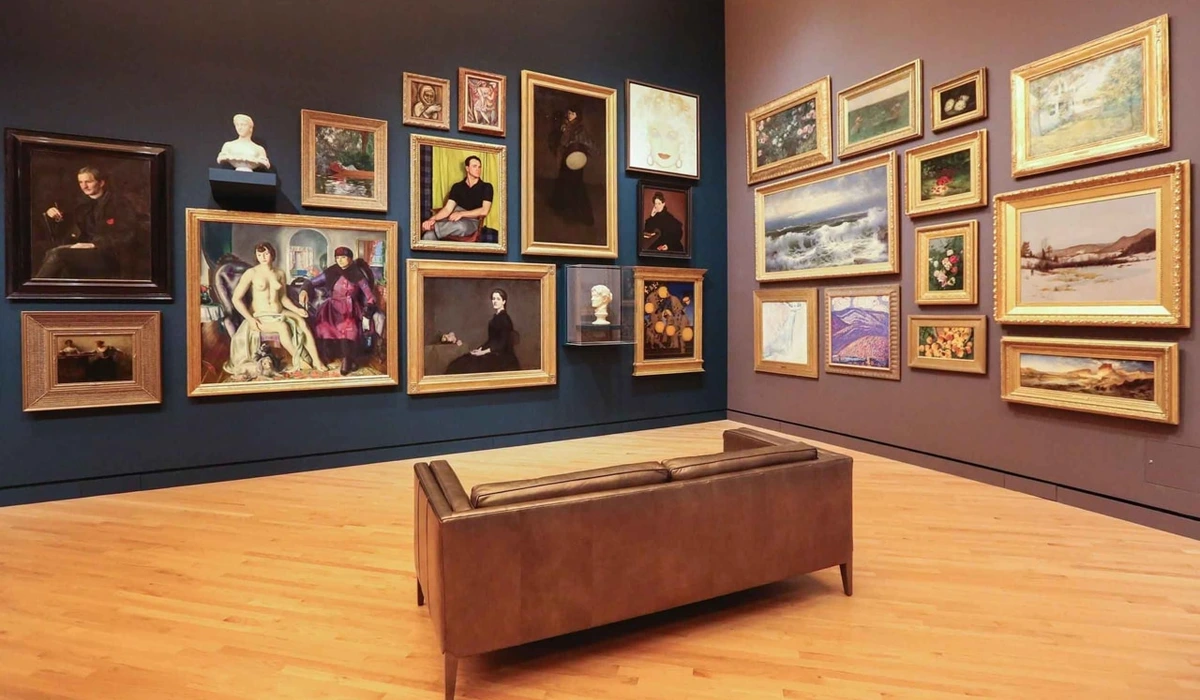
- Street Art & Public Art: Many cities boast vibrant street art scenes, transforming urban landscapes into dynamic open-air galleries. Look for guided tours (walking or biking) or explore known hotspots (like Berlin's East Side Gallery & surrounding areas, London's Shoreditch/Brick Lane, NYC's Bushwick Collective, São Paulo's Beco do Batman, Melbourne's Hosier Lane, Valparaíso's hillsides, Mexico City's Roma/Condesa). Cities also invest in public sculptures (like Chicago's Millennium Park), monuments (often with complex histories), and temporary installations that enrich the cityscape and are freely accessible 24/7. Keep your eyes open as you wander – sometimes the best pieces are unexpected, just waiting to be found on a random wall. It's art that lives and breathes with the city, often ephemeral and constantly changing, which gives it a unique energy. It feels democratic, accessible to everyone.
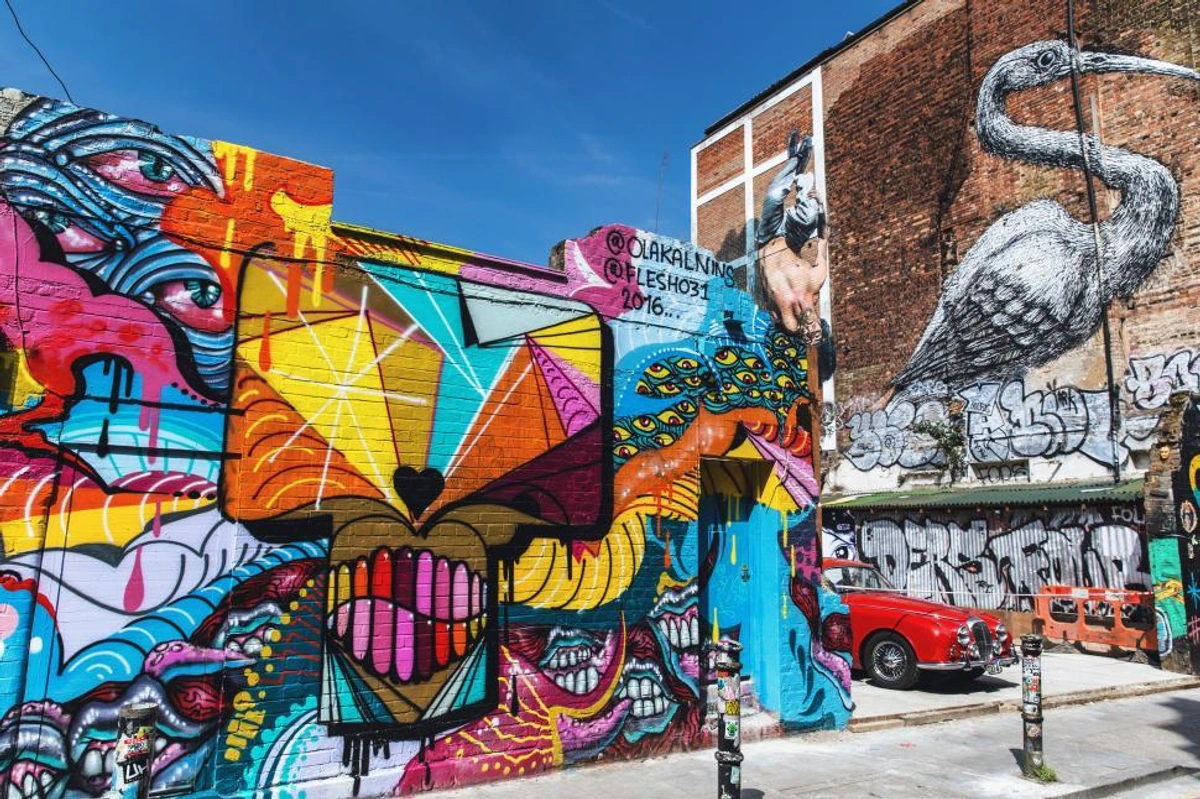
credit, licence
- Artist Studios & Open Studio Events: Some cities or neighborhoods host annual or periodic open studio weekends or events where artists welcome the public into their workspaces. This offers a unique chance for direct interaction, insight into the artistic process (seeing the mess and the magic!), and sometimes the opportunity to buy work directly from the source. Check local listings, cultural calendars, or specific studio building websites (common in cities like Berlin, London, NYC, LA). It's a fantastic way to connect with the local creative community and see where the work actually happens. As an artist myself, I love seeing other people's studios – it's like peeking into their brain. It offers a unique intimacy you can't find in a gallery or museum. Resources like our guide on visiting artist residency open studios can offer more insight.
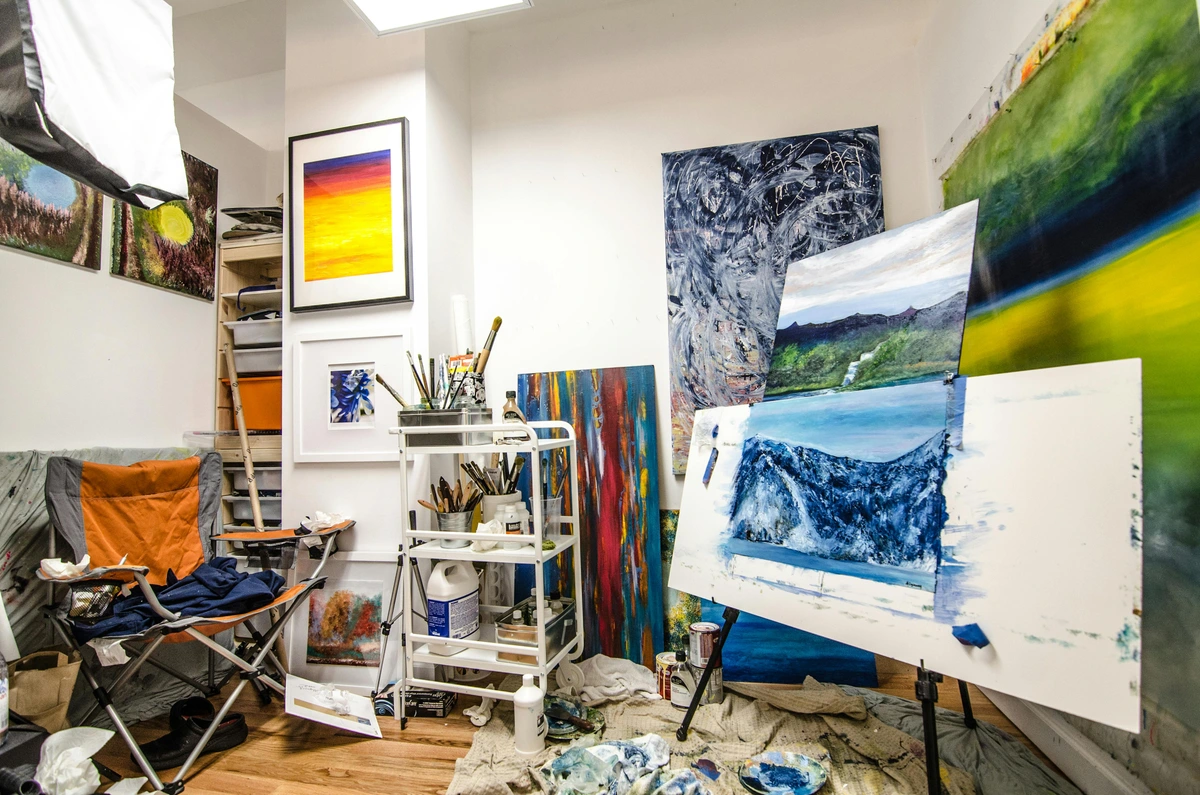
- Independent Art Spaces & Non-Profits: These venues (often called Kunsthallen in German-speaking countries, or alternative spaces, project spaces elsewhere) play a vital role in the art ecosystem. They often feature more experimental, site-specific, community-focused, or politically engaged art than mainstream institutions or commercial galleries. They can be excellent places to discover local talent, challenging perspectives, and artists working outside market trends. They might be in less obvious locations, so do a little research beforehand. These are often where the most interesting, boundary-pushing work is happening; they feel raw and vital.
- University Art Museums & Galleries: Don't overlook art collections and exhibition spaces affiliated with universities (e.g., Harvard Art Museums in Cambridge/Boston, Ashmolean Museum in Oxford, Yale University Art Gallery, UCLA Hammer Museum in LA). They often hold significant, diverse collections built over time for teaching purposes, host scholarly exhibitions curated by academics and students, organize public lectures and symposia, and contribute actively to the local and international art dialogue. They can be hidden gems with high-quality shows, often with a more academic or research-driven focus. See our guide to University Art Galleries. I've found some truly unexpected treasures in university galleries.
- Artist Residencies & Foundations: Some foundations established by artists or collectors open their spaces or collections to the public, offering unique insights (e.g., Fondation Beyeler near Basel, Judd Foundation in Marfa/NYC, Fondazione Prada in Milan/Venice, Dia Beacon upstate NY). Artist residency programs sometimes have public open days or end-of-residency exhibitions showcasing work created on-site. These can offer a glimpse into current artistic research and creation, showing art in the making.
- Auction House Previews: Major auction houses (Christie's, Sotheby's, Phillips) hold public previews before their big sales in cities like New York, London, Paris, Hong Kong. These are free to enter and offer a chance to see museum-quality works (from Old Masters to contemporary) up close before they disappear into private collections. Check their calendars online. It's like a temporary, high-stakes museum exhibition, and you get to see incredible pieces without the museum crowds (usually). It's a fascinating, sometimes intimidating, glimpse into the commercial side of the art world.
Choosing a City Based on Your Interests: A Deeper Dive
Aligning your destination with your specific artistic passions enhances the travel experience. This section expands on the "Define Your Primary Interests" point from the planning section, offering a more detailed breakdown based on common interests, though remember most great art cities offer a mix! It's about finding the place that speaks most directly to your artistic soul at this moment. Why does a particular era or style call to you? Exploring that 'why' can make the trip even more meaningful.
- Antiquity (Egyptian, Greek, Roman): Connecting with the very foundations of Western art. Rome (Colosseum, Forum, Palatine Hill, Pantheon, Vatican Museums, Capitoline Museums – it's unparalleled for Roman), Athens (Acropolis & Acropolis Museum, National Archaeological Museum – essential for Greek), London (British Museum – huge Egyptian, Greek, Roman collections), Paris (Louvre – strong Egyptian, Greek, Roman wings), Berlin (Museum Island: Pergamon Altar - when open, Ishtar Gate, Neues Museum's Egyptian collection incl. Nefertiti), Cairo (Egyptian Museum – for ancient Egypt, obviously!), Mexico City (Museo Nacional de Antropología - pre-Hispanic).
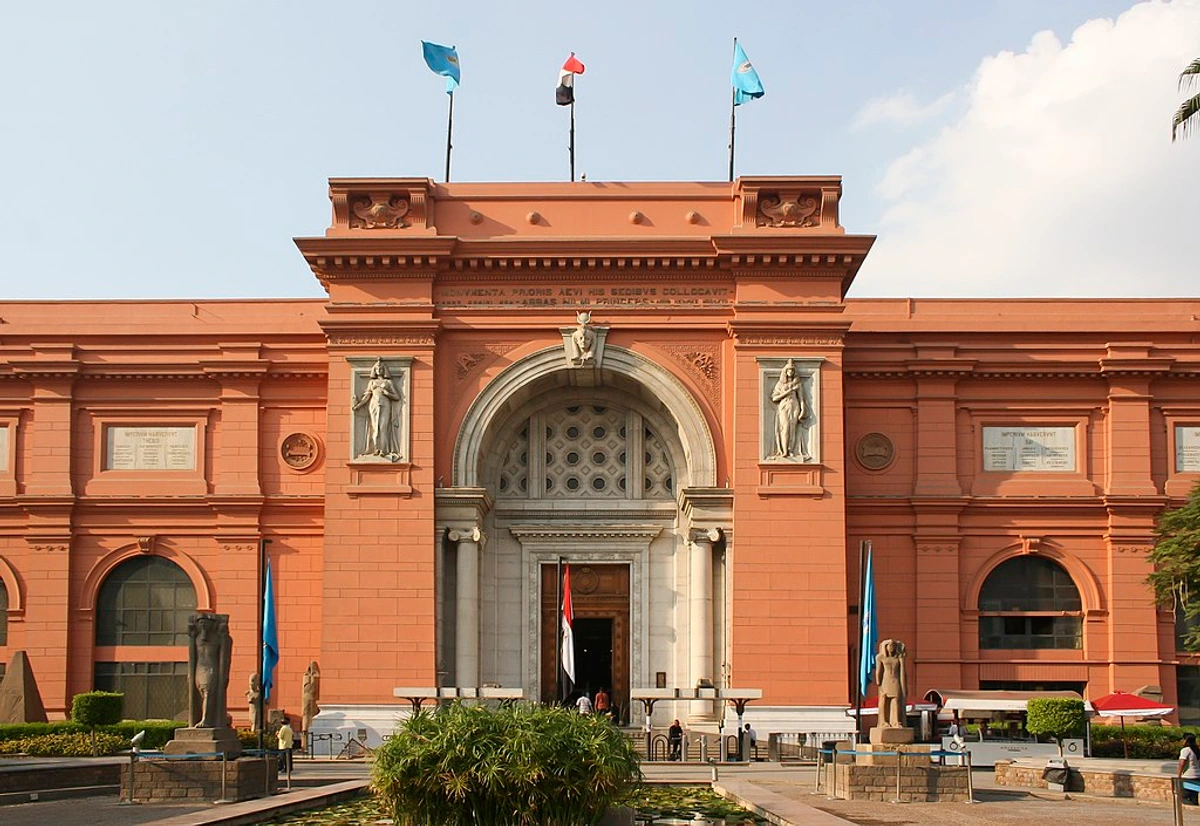
- Italian Renaissance: The explosion of humanism and artistic innovation. Florence (Uffizi, Accademia, Bargello, Pitti Palace, Brancacci Chapel – the absolute epicenter, you breathe Renaissance here), Rome (Vatican Museums - Raphael Rooms, Sistine Chapel, St. Peter's Basilica, Borghese Gallery), Venice (Gallerie dell'Accademia - Venetian school: Titian, Tintoretto, Veronese; Scuola Grande di San Rocco - Tintoretto cycle), Milan (Leonardo da Vinci's Last Supper at Santa Maria delle Grazie - book months ahead!). Also strong holdings in Paris (Louvre), London (National Gallery), Vienna (Kunsthistorisches).
- Northern Renaissance / Dutch & Flemish Masters: Meticulous detail, everyday life, and stunning light. Amsterdam (Rijksmuseum - Rembrandt, Vermeer, Hals), The Hague (Mauritshuis - Vermeer's Girl with a Pearl Earring, Rembrandt's Anatomy Lesson), Antwerp (Rubenshuis, Royal Museum of Fine Arts - currently undergoing renovation but check status, Plantin-Moretus Museum), Bruges (Groeningemuseum - Van Eyck, Memling), London (National Gallery), Berlin (Gemäldegalerie), Vienna (Kunsthistorisches - world's best Bruegel collection).
- Baroque: Drama, emotion, and theatricality. Rome (Borghese Gallery - Bernini, Caravaggio; numerous churches), Vienna (Kunsthistorisches), St. Petersburg (Hermitage), Naples (Capodimonte Museum - Caravaggio), London (National Gallery), Paris (Louvre).
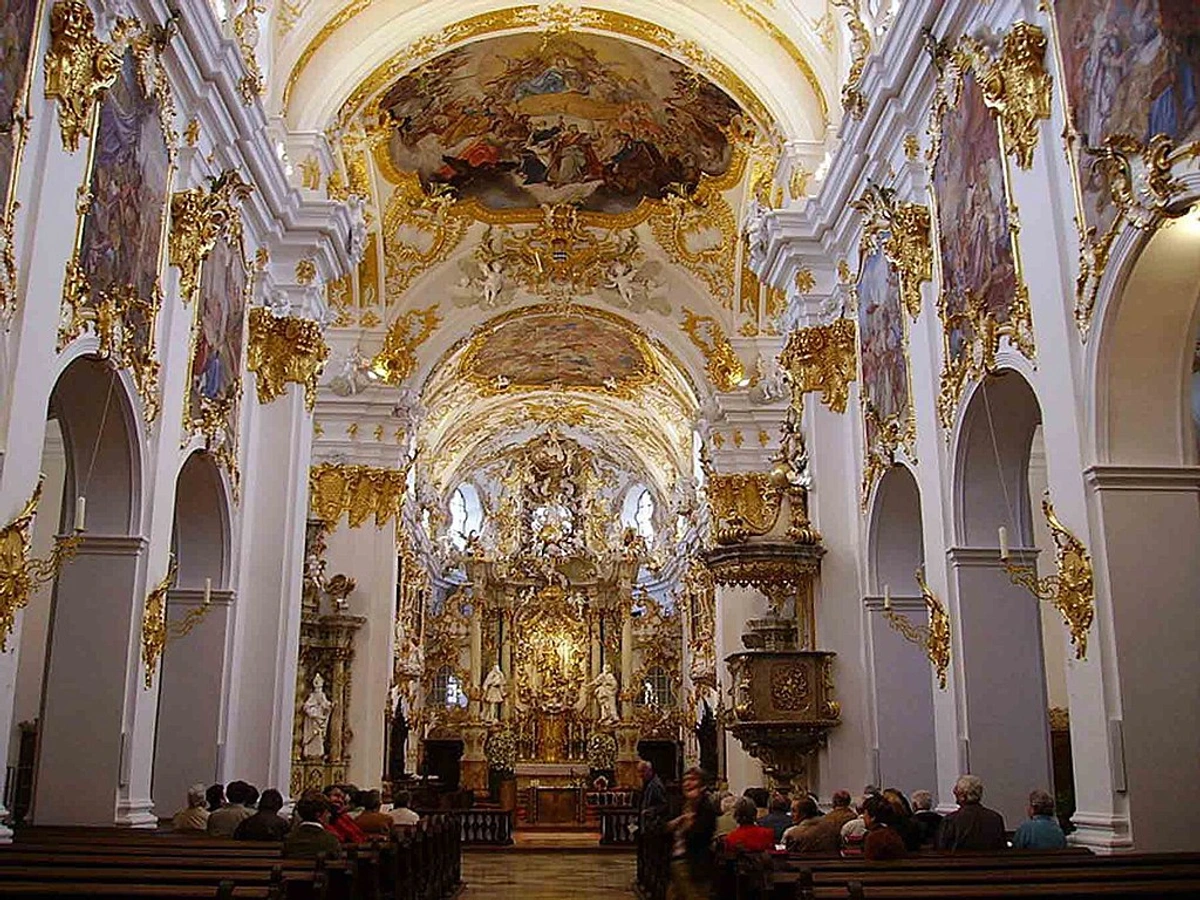
- Impressionism & Post-Impressionism: Capturing light, moment, and subjective experience. Paris is unparalleled (Musée d’Orsay, Musée Marmottan Monet, Orangerie, plus Giverny day trip for Monet's gardens). Significant collections also in London (National Gallery, Courtauld Gallery), New York (Met, MoMA), Amsterdam (Van Gogh Museum - essential for Van Gogh), Oslo (Munch Museum - for the precursor, Munch), Chicago (Art Institute – very strong collection), Washington D.C. (National Gallery of Art, Phillips Collection), Moscow/St. Petersburg (Pushkin/Hermitage - former Shchukin/Morozov collections, check accessibility). For more, see the ultimate guide to Impressionism.
![]()
- Modern Art (Early 20th C. - c. 1970): The revolution that changed everything. New York (MoMA, Guggenheim, Whitney), Paris (Centre Pompidou, Musée Picasso, Musée d'Art Moderne de Paris), London (Tate Modern), Berlin (Neue Nationalgalerie, Berggruen Museum, Bröhan Museum - Art Nouveau/Deco), Amsterdam (Stedelijk), Madrid (Reina Sofía - strong Spanish focus: Picasso, Dalí, Miró), Basel (Fondation Beyeler, Kunstmuseum Basel), Vienna (Leopold Museum - Austrian focus: Schiele, Klimt; mumok), Zurich (Kunsthaus Zurich), Chicago (Art Institute). Delve deeper with our guide to the best museums for modern art. Understanding modern art itself can enrich your visit.
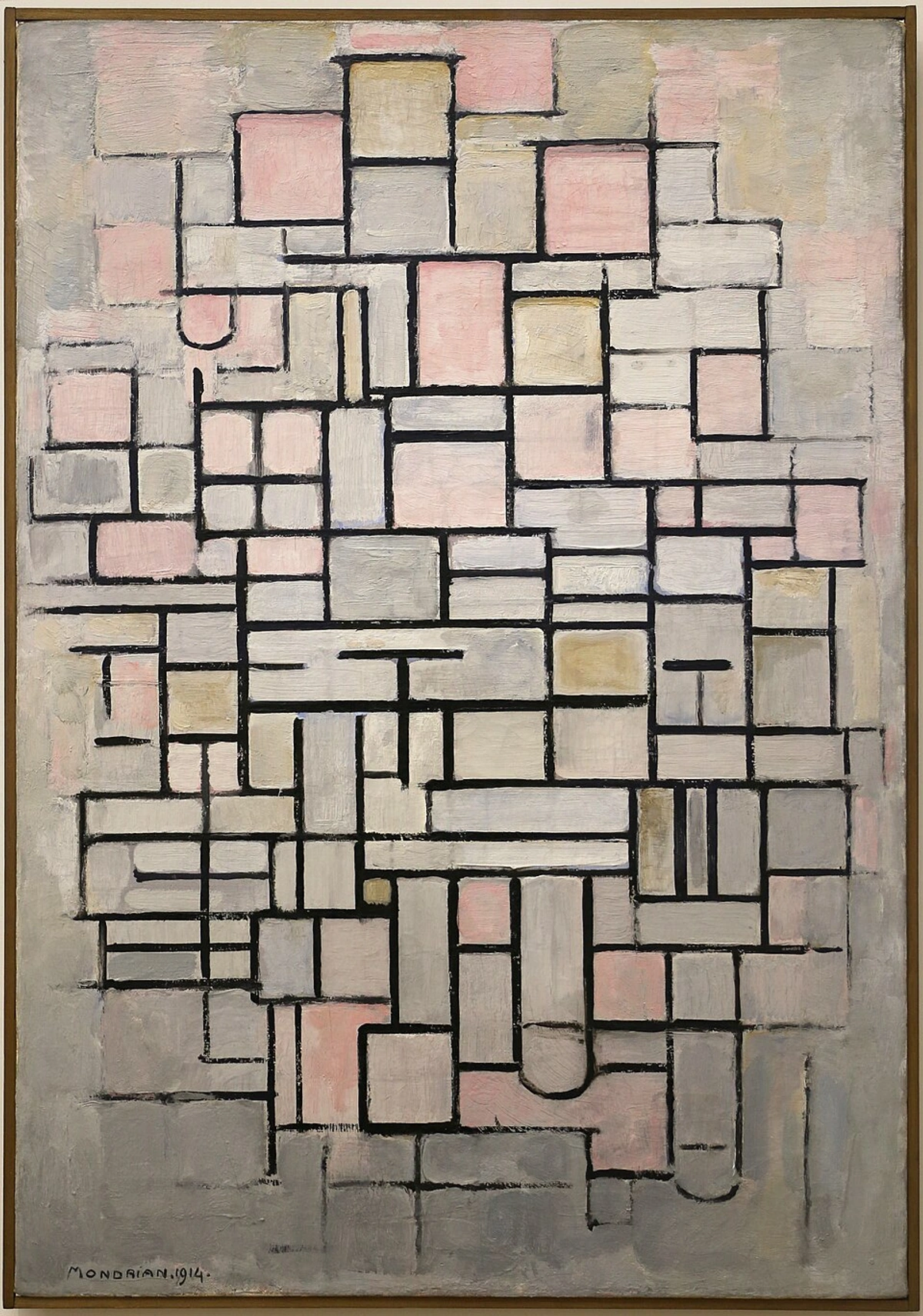
- Contemporary Art (c. 1970 - Present): Seeing what's happening now. New York, London, Berlin are major centers with vast gallery scenes and key institutions (New Museum, Tate Modern, Hamburger Bahnhof). Also Los Angeles (MOCA, The Broad, Hammer, huge gallery scene), Tokyo (Mori Art Museum, galleries), São Paulo (Biennial, galleries, MASP, Pinacoteca), Hong Kong (M+, Art Basel HK, galleries), Seoul (Leeum, MMCA, Frieze Seoul, galleries), Lagos (Art X Lagos, galleries), Bogotá (ARTBO, galleries), Istanbul (Biennial, galleries), Mexico City (numerous galleries, MAXXI). Cities hosting major art fairs (Art Basel in Basel, Frieze in London/NY/LA/Seoul, Venice Biennale in Venice, documenta in Kassel) are crucial snapshots. Exploring contemporary scenes might even inspire you to buy modern art or discover vibrant abstract works like those available to buy here.
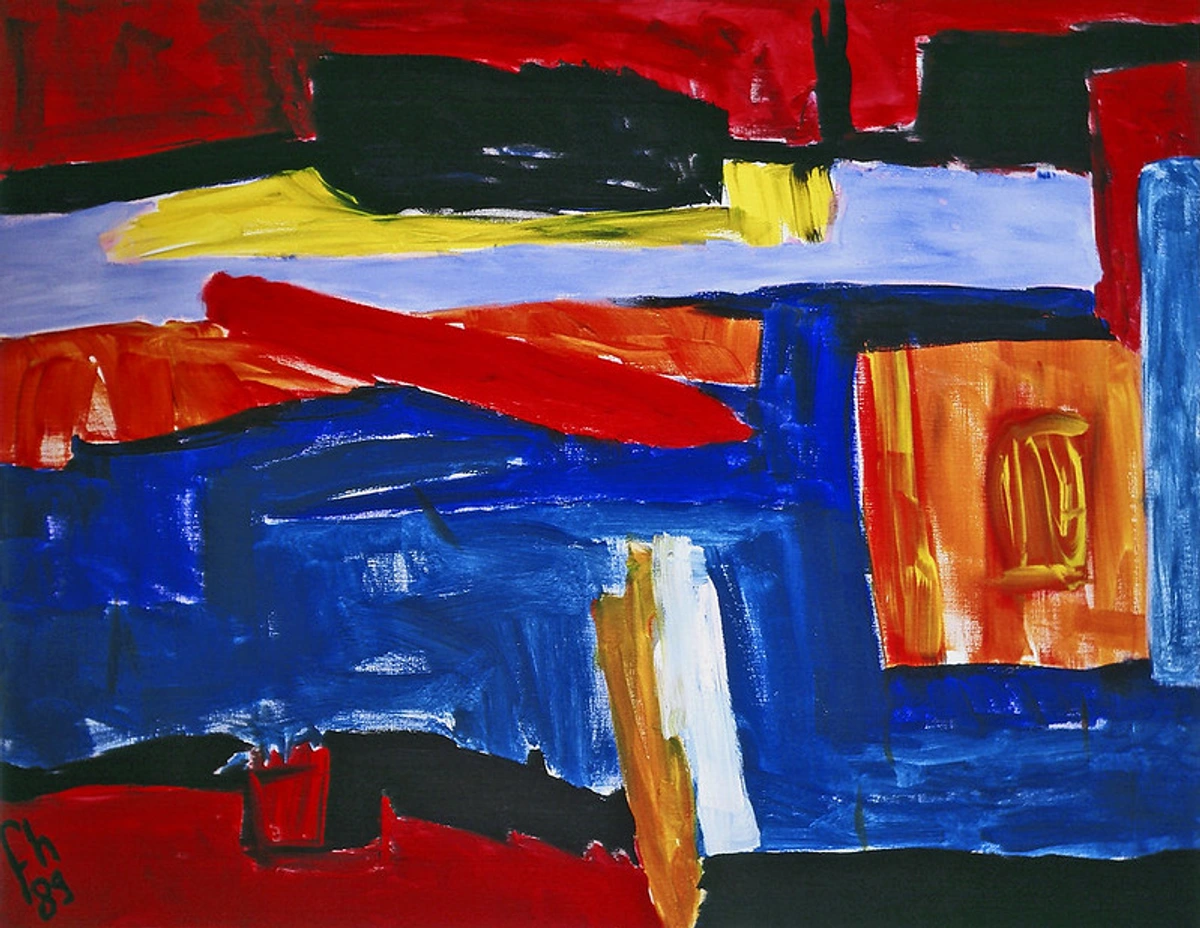
- Street Art: Art that interacts directly with the urban environment. Berlin (East Side Gallery, Urban Nation museum, murals in Kreuzberg/Friedrichshain – tours highly recommended), London (Shoreditch, Brick Lane, Camden, Leake Street Tunnel), New York (Bushwick Collective, Lower East Side, street art tours available), São Paulo (Beco do Batman, Vila Madalena), Melbourne (Hosier Lane & other laneways, Fitzroy), Bristol (UK) (Banksy's hometown, Upfest festival), Lisbon (dedicated tours, large murals), Valparaíso, Chile (hillsides covered in art), Philadelphia (Mural Arts program), Mexico City (Roma, Condesa, Centro Histórico).
- Architecture as Art: Buildings that are masterpieces in themselves. Barcelona (Gaudí's Modernisme is unmissable), Chicago (birthplace of the skyscraper, Frank Lloyd Wright homes nearby, architectural boat tours – seriously, do the boat tour!), Rome (Ancient wonders, Baroque churches/fountains), Vienna (Imperial palaces, Secession building, Otto Wagner's Art Nouveau, Hundertwasserhaus), Berlin (Bauhaus Archive, diverse modern/contemporary landmarks like the Reichstag dome, Jewish Museum), Rotterdam (innovative post-WWII & contemporary architecture), Istanbul (Byzantine mosques, Ottoman palaces), Dubai (hyper-modern skyscrapers), Brussels (Art Nouveau gems by Horta).
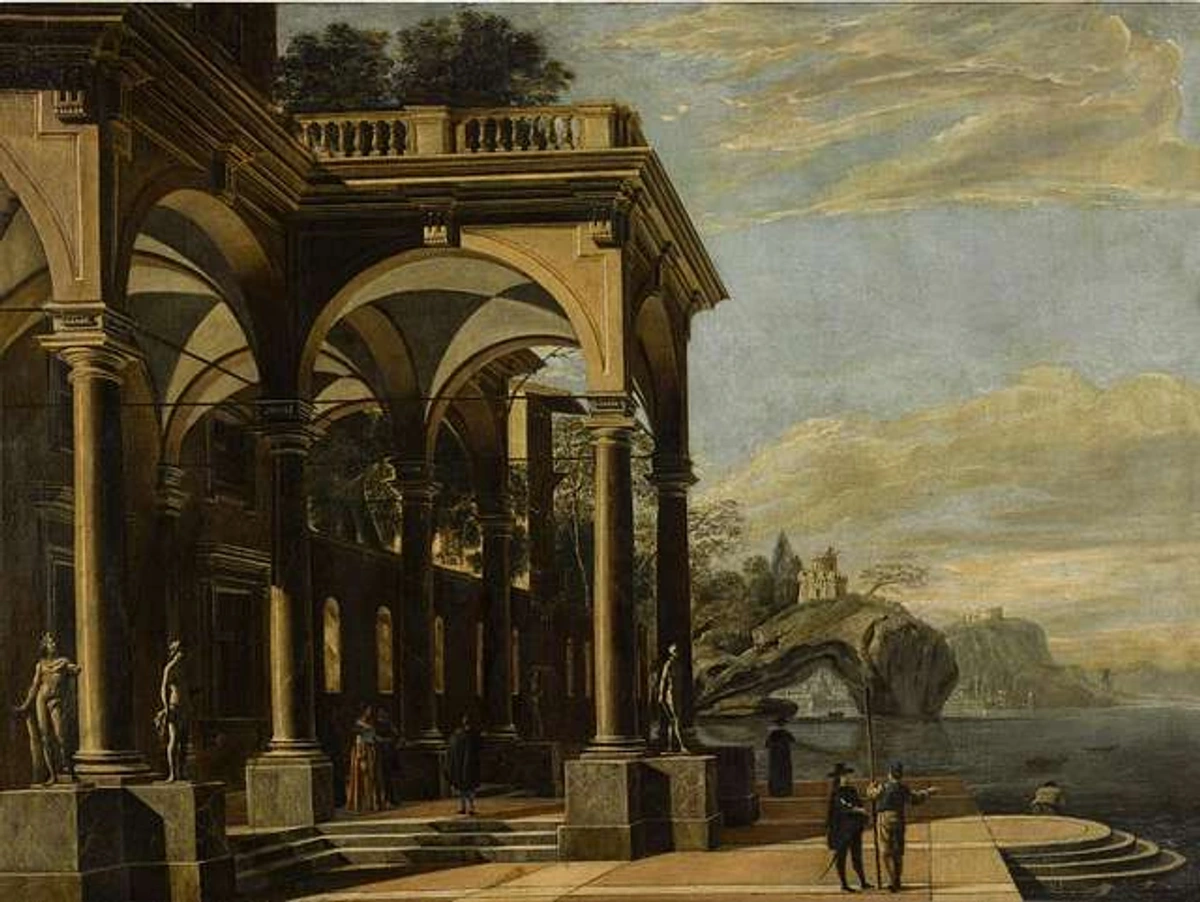
- Design & Decorative Arts: Where form meets function beautifully. London (V&A – unparalleled, Design Museum), Paris (Musée des Arts Décoratifs), Vienna (MAK – Museum of Applied Arts, Hofburg Silver Collection), Milan (Triennale Design Museum, Salone del Mobile annual design fair), Helsinki (Design District, Design Museum Finland), 's-Hertogenbosch, NL (Design Museum Den Bosch), New York (Cooper Hewitt, Smithsonian Design Museum).
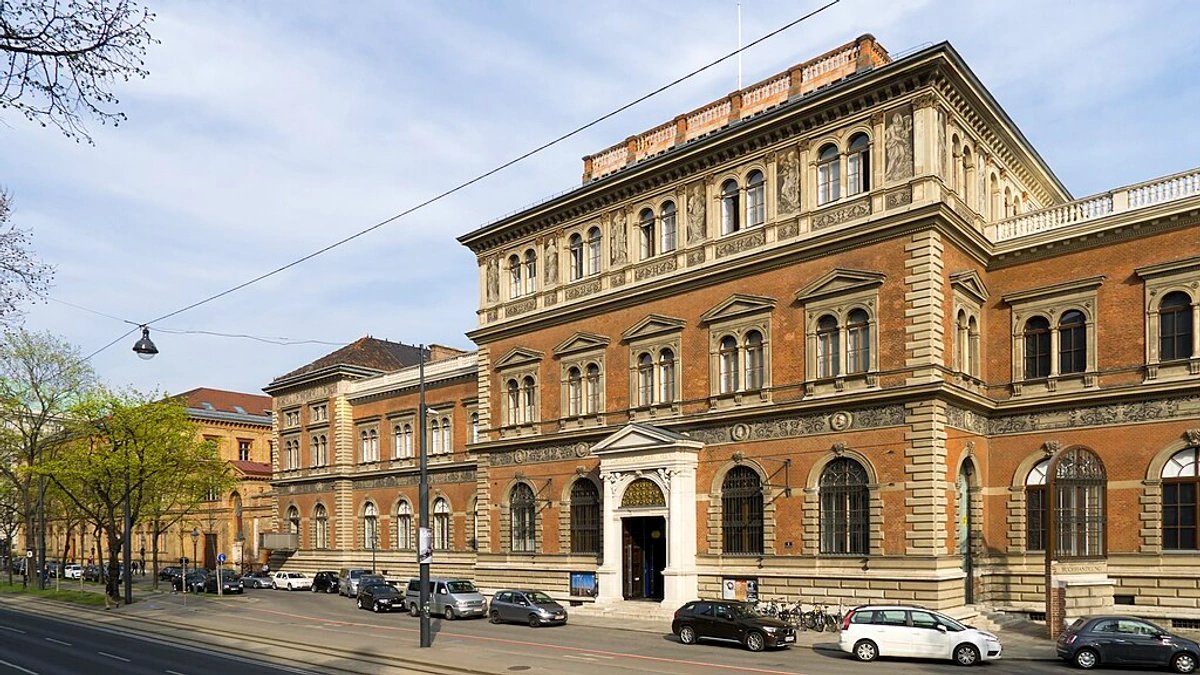
- Photography: The art of the captured moment. Paris (Maison Européenne de la Photographie (MEP), Jeu de Paume, Fondation Henri Cartier-Bresson, Paris Photo fair), London (The Photographers' Gallery, V&A photography centre), Amsterdam (FOAM - Fotografiemuseum Amsterdam), Berlin (C/O Berlin, Museum für Fotografie/Helmut Newton Foundation), New York (ICP - International Center of Photography, photo galleries in Chelsea), Arles, France (Rencontres d'Arles annual summer photography festival).
- Focus on Specific Artists: A pilgrimage to understand a single vision. Amsterdam (Van Gogh, Rembrandt), Florence (Michelangelo, Leonardo da Vinci, Botticelli, Donatello), Mexico City (Diego Rivera, Frida Kahlo), Barcelona (Picasso, Miró, Gaudí), Vienna (Klimt, Schiele), Figueres, Spain (Dalí Theatre-Museum – a surreal experience itself), Oslo (Munch), The Hague (Vermeer, Escher at Escher in Het Paleis), Paris (Monet, Picasso, Rodin). Always check if an artist's home/studio is open to visit for a more personal connection. Seeing where someone like Frida Kahlo lived and worked tells you so much about her art.
Emerging and Notable Art Hubs: Beyond the Usual Suspects
While the established capitals dominate, other cities offer compelling, dynamic, and often less crowded (and sometimes more affordable!) art experiences worth exploring. These places often have a palpable buzz, a sense that things are really happening now. They might not have the sheer volume of the big players, but they offer unique perspectives and vibrant local scenes. Exploring these can feel like discovering a hidden gem, a different facet of the global art conversation. It's exciting to visit a city where the art scene feels like it's rapidly evolving and less established, offering a different kind of energy than the traditional capitals.
North America
- Los Angeles, USA: A sprawling, influential center for contemporary art production and exhibition, with a unique vibe distinct from NYC. LA's sprawl feels like it mirrors the vastness of creative possibility. Major institutions include LACMA (Los Angeles County Museum of Art), The Broad (contemporary, free entry but book ahead), MOCA (Museum of Contemporary Art), Hammer Museum (often cutting-edge shows, free), and the Getty Center (architecture, gardens, pre-20th C. art) & Getty Villa (Greek/Roman art in Malibu). Countless galleries thrive in districts like Culver City, Downtown LA, Hollywood, and Mid-Wilshire, alongside vibrant street art. A strong contender among the best art cities in the US. The sheer space allows for large-scale installations you might not see elsewhere.
- Vancouver, Canada: Known for its strong Indigenous art scene, vibrant public art, and growing contemporary galleries. The Vancouver Art Gallery has significant historical and contemporary collections, including a strong focus on Indigenous art. Explore Granville Island for studios and galleries, and keep an eye out for public sculptures and murals throughout the city. It feels connected to both nature and cutting-edge creativity.
- Santa Fe, USA: While smaller, Santa Fe is a unique art city, particularly renowned for Indigenous American art, Southwestern art, and a thriving gallery scene along Canyon Road. It also has a growing contemporary edge, notably with the immersive art space Meow Wolf. It offers a distinct, regional focus that's different from the major global hubs.
South America
- São Paulo, Brazil: South America's contemporary art powerhouse. The energy here is infectious. Home to the influential São Paulo Biennial, a thriving gallery network (especially in Vila Madalena and Jardins – check out Fortes D'Aloia & Gabriel, Mendes Wood DM), impressive street art (including the unique Pixo graffiti style and the colorful Beco do Batman), and significant museums like MASP (Museu de Arte de São Paulo - iconic Lina Bo Bardi building with glass easels) and Pinacoteca do Estado. It's a city that feels alive with creativity, often tackling complex social issues through art.
- Bogotá, Colombia: A key center for Latin American art with a rich history and dynamic present. Features the important Museo Botero (donated by the artist Fernando Botero) and the dazzling Museo del Oro (Gold Museum, pre-Hispanic goldwork). The ARTBO art fair (October) is a major draw. A strong network of contemporary art galleries (like NC-arte, Instituto de Visión) often explores social and political themes relevant to the region. Explore the historic La Candelaria district for murals and atmosphere. The street art scene here is particularly impressive and politically charged.
Europe
- Basel, Switzerland: While small, Basel transforms into the absolute center of the art world during the annual Art Basel fair in June (the original and arguably most prestigious). It also boasts outstanding permanent institutions like the Fondation Beyeler (stunning Renzo Piano building, amazing modern art collection) and the Kunstmuseum Basel (excellent Old Masters to modern collection). It's a city that punches far above its weight, offering serious quality. If you're there during the fair, the whole city becomes an art installation.
- Brussels, Belgium: Hosts the respected Art Brussels fair (April) and has a strong, accessible contemporary gallery scene, often seen as a more affordable and less overwhelming alternative to Paris or London. Also home to the Magritte Museum, the Royal Museums of Fine Arts of Belgium, the Horta Museum (Art Nouveau architect's home), and contemporary art centers like WIELS. It has a unique blend of historical charm and contemporary edge, and its comic strip murals add another layer of public art.
- Lisbon, Portugal: A city with a growing contemporary art scene, vibrant street art, and beautiful historic architecture. Check out the Museu Coleção Berardo (modern and contemporary art), the Calouste Gulbenkian Museum (diverse collection from antiquity to modern), and explore neighborhoods like Bairro Alto and Alfama for street art. The light here is incredible, and it feels like a city waking up creatively.
- Glasgow, Scotland: Known for its strong artistic community, independent galleries, and the legacy of the Glasgow School of Art. The Kelvingrove Art Gallery and Museum has a broad collection, while the Gallery of Modern Art (GoMA) focuses on contemporary work. Explore the Merchant City and Finnieston for smaller galleries. It's a city with a gritty, authentic creative energy.
- Bilbao, Spain: Transformed by the iconic Guggenheim Museum Bilbao (Frank Gehry architecture, modern and contemporary art), Bilbao has become a major art destination. Beyond the Guggenheim, explore the Museo de Bellas Artes de Bilbao (classical to contemporary Spanish and Basque art) and the city's public sculptures. It's a testament to how art and architecture can revitalize a city.
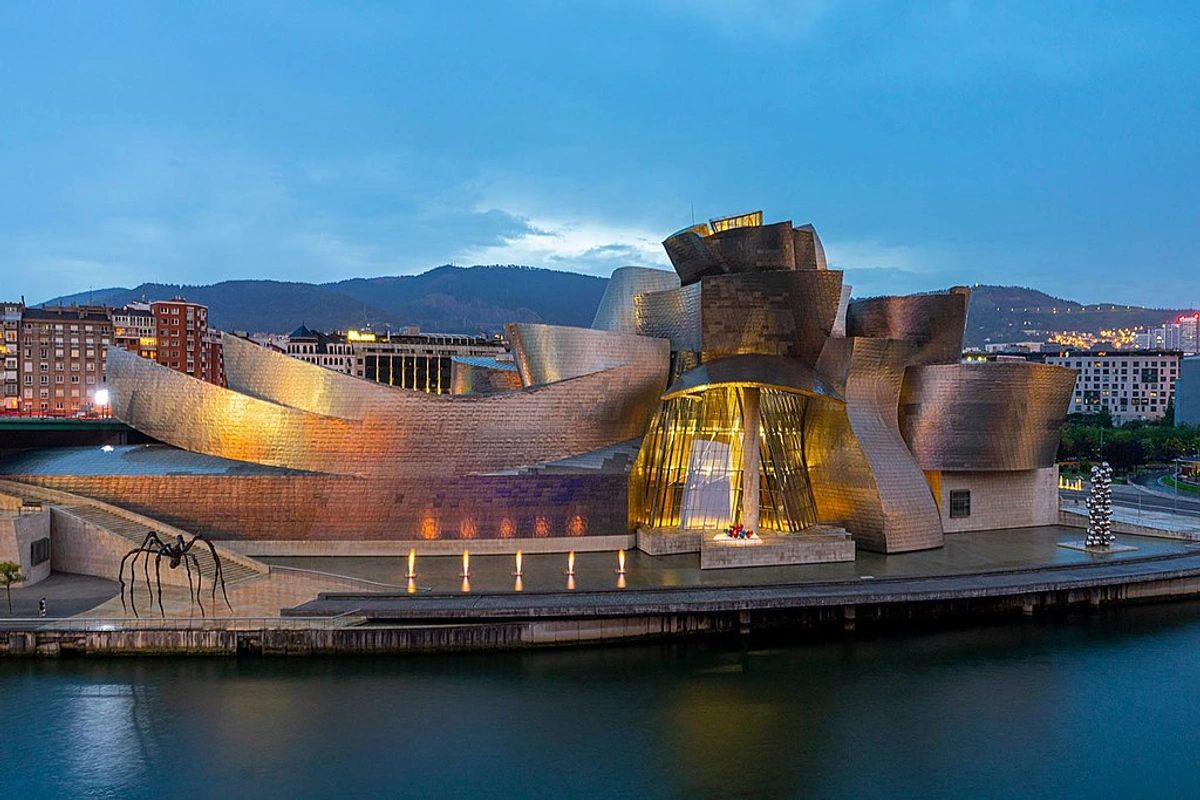
Asia
- Seoul, South Korea: A rapidly growing global art destination, buzzing with energy and K-culture influence. It feels like it's constantly innovating, and its art scene is no different. Hosts Frieze Seoul (September) alongside the long-standing KIAF art fair. Features top-tier institutions like the Leeum Museum of Art (incredible collection spanning traditional Korean to contemporary international art), MMCA (National Museum of Modern and Contemporary Art - multiple branches), and numerous influential commercial galleries showcasing leading Korean and international artists (Kukje Gallery, Gallery Hyundai, PKM Gallery). Explore areas like Samcheong-dong and Hannam-dong for galleries. Don't miss the futuristic Dongdaemun Design Plaza (DDP) by Zaha Hadid.
- Hong Kong, SAR: A critical gateway to the Asian art market and a major international art hub, despite recent political shifts. It's a fascinating blend of East and West, tradition and cutting-edge. Hosts the massive Art Basel Hong Kong fair (March) and boasts world-class institutions like the visually stunning M+ museum for visual culture (part of the West Kowloon Cultural District) and the Hong Kong Museum of Art. Numerous international (Gagosian, White Cube, David Zwirner) and local galleries are present, especially in Central and Wong Chuk Hang. Explore more best art cities in Asia. Also check out Tai Kwun, a former police station compound transformed into a heritage and arts hub.
- Shanghai, China: A dynamic and rapidly evolving contemporary art scene, centered around districts like the M50 Creative Park (artist studios and galleries) and the West Bund Art Museum (often hosting collaborations with international institutions like the Centre Pompidou). The Power Station of Art (PSA) is a major contemporary art museum in a former power plant. It's a city where the art scene feels incredibly fast-paced and forward-looking.
- Singapore: A clean, modern city with a growing reputation as an art hub in Southeast Asia. The National Gallery Singapore houses the world's largest public collection of Singaporean and Southeast Asian art. The ArtScience Museum (iconic lotus-shaped building) hosts major international touring exhibitions. Explore the Gillman Barracks for a cluster of contemporary galleries. It feels very curated and international.
Africa
- Lagos, Nigeria: The engine of the West African contemporary art scene, with a vibrant, rapidly evolving landscape. A city buzzing with creative energy and compelling narratives, offering perspectives often underrepresented on the global stage. Home to influential galleries like Art Twenty One, Rele Gallery, and the expansive Nike Art Gallery. The ART X Lagos art fair (November) is a key event showcasing African art. Institutions like the Yemisi Shyllon Museum of Art are growing in importance.
Oceania
- Melbourne, Australia: Known for its vibrant street art culture, particularly in its famous laneways (Hosier Lane, AC/DC Lane), and a strong gallery scene. The National Gallery of Victoria (NGV) is Australia's oldest and most visited gallery, with extensive collections. Explore the Fitzroy and Collingwood neighborhoods for independent galleries and studios. It's a city that feels effortlessly cool and creative.
- Sydney, Australia: Home to the Art Gallery of New South Wales (AGNSW), with significant Australian and international collections, and the Museum of Contemporary Art Australia (MCA), located in a prime spot on the Circular Quay. The city hosts the Biennale of Sydney, a major contemporary art event. Its art scene feels integrated with its stunning harbor setting.
Art Beyond the City Center: Worth the Day Trip
Sometimes, some of the most inspiring art experiences are just a short journey outside the main city. These places offer a different pace and context, often focusing on a specific artist, collection, or type of art. If you have an extra day, consider one of these nearby gems – they can offer a refreshing change of pace and unexpected artistic encounters. These trips can feel like stepping into a different world, offering a unique perspective away from the urban buzz.
- Giverny, France (from Paris): Visit Claude Monet's house and gardens. Seeing the water lilies and the Japanese bridge that inspired so many of his famous paintings is magical. It's like stepping into an Impressionist painting, a truly immersive experience.
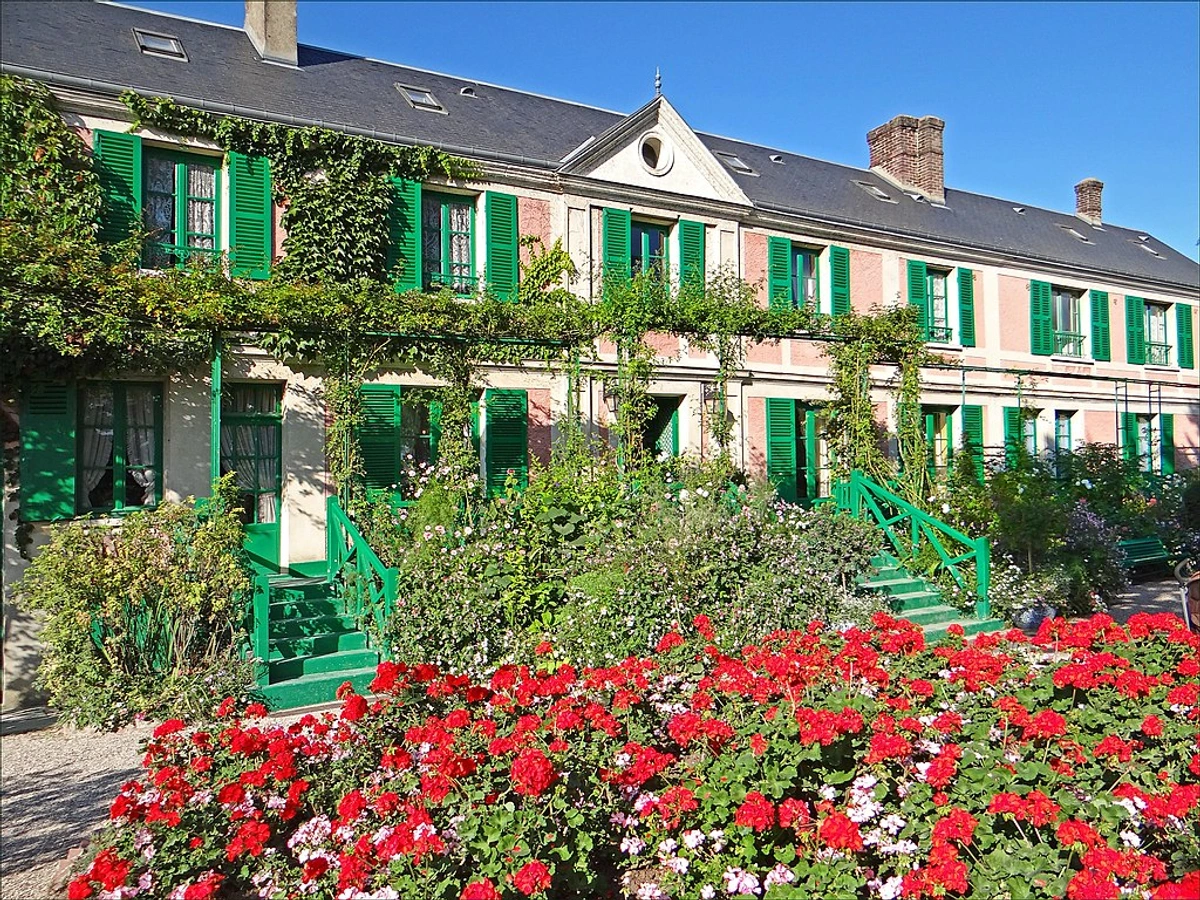
- Dia Beacon, USA (from NYC): Located in a former Nabisco box printing factory on the Hudson River, Dia Beacon houses the Dia Art Foundation's collection of art from the 1960s to the present. The vast industrial space is perfect for large-scale installations and minimalist works by artists like Richard Serra, Donald Judd, and Dan Flavin. It's a pilgrimage for lovers of large-scale, post-minimalist art, offering a sense of scale and space rarely found in city museums.
- Versailles, France (from Paris): While primarily known for its palace and gardens, Versailles is an incredible example of Baroque architecture, decorative arts, and landscape design on a monumental scale. It's a different kind of art experience, focused on royal power and grandeur.
- Hakone Open-Air Museum, Japan (from Tokyo): Japan's first open-air museum, set in the beautiful Hakone mountains. It features large-scale sculptures by Japanese and international artists, including a significant collection of Picasso. It's a wonderful way to combine art appreciation with stunning natural scenery.
- Kröller-Müller Museum, Netherlands (from Amsterdam/Utrecht): Located in the Hoge Veluwe National Park, this museum boasts the second-largest collection of Van Gogh paintings, plus works by other modern masters, and a large sculpture garden. You can even borrow white bikes to cycle through the park to get there. Art, nature, and cycling – a perfect combination. Seeing Van Gogh's work surrounded by nature feels particularly fitting.
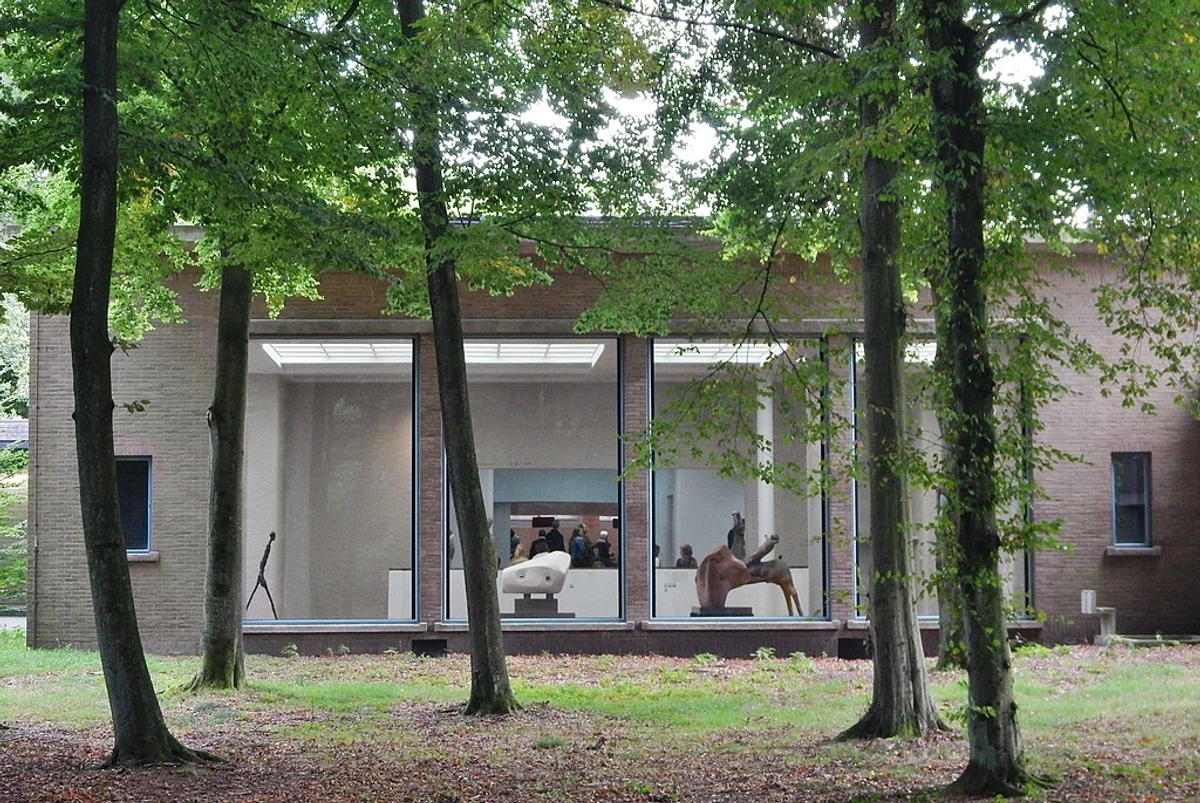
- Marfa, USA (a destination in itself, but often a trip from a major Texas city): A small desert town in West Texas that has become a minimalist art pilgrimage site thanks to Donald Judd. It's home to the Chinati Foundation and the Judd Foundation, showcasing large-scale installations in former military buildings. It's remote, requires planning, and is a unique, immersive art experience focused on space, light, and form. It's less about individual objects and more about the experience of art in a specific environment.
- Louisiana Museum of Modern Art, Denmark (from Copenhagen): Located on the coast north of Copenhagen, this museum is renowned for its stunning architecture, beautiful sculpture park overlooking the sea, and excellent collection of modern and contemporary art. It's a truly harmonious blend of art, architecture, and nature.
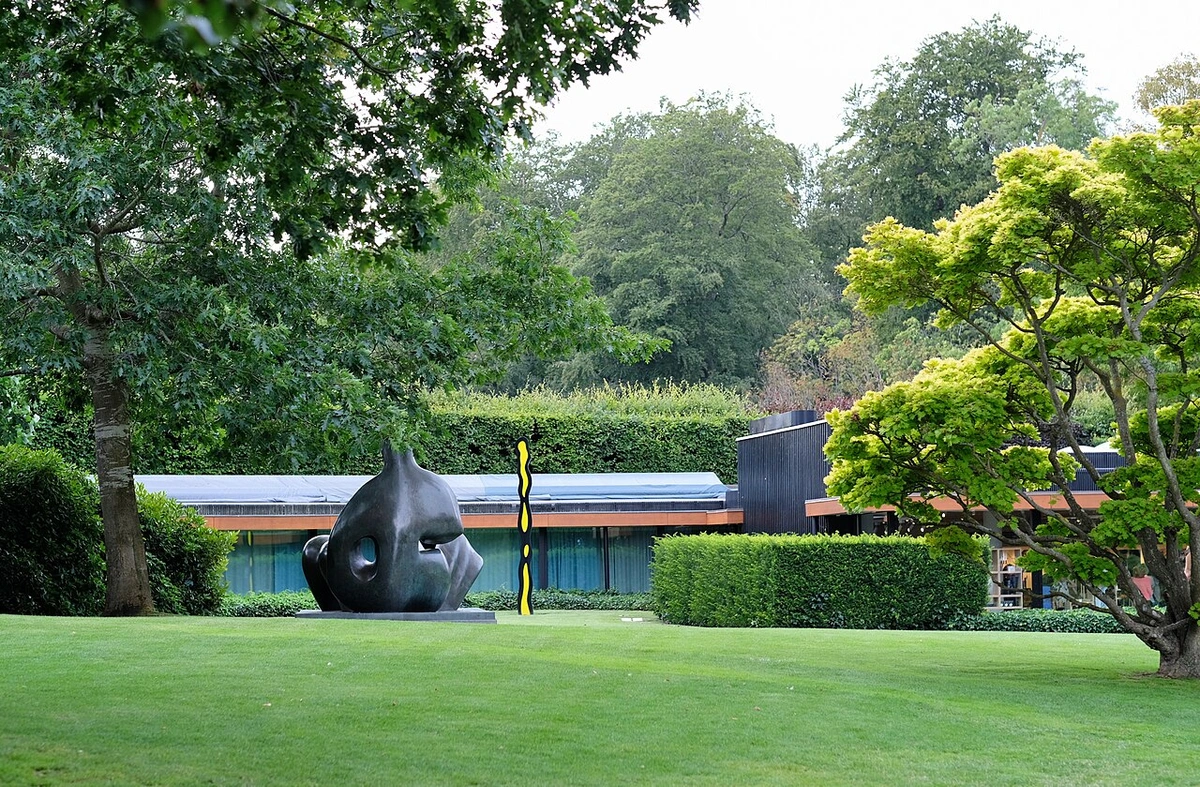
- Storm King Art Center, USA (from NYC): A vast outdoor sculpture park in the Hudson Valley, featuring monumental works by post-war artists like Alexander Calder, Mark di Suvero, and Richard Serra set within 500 acres of fields, hills, and woodlands. It's an incredible place to experience large-scale sculpture in dialogue with the landscape.
Making the Most of Your Art Trip: Practical Tips & Etiquette
Once you've arrived, maximize your cultural immersion with these tips. It's easy to get overwhelmed, so a little strategy goes a long way! And let's be honest, nobody wants to be that person in the museum. These tips are born from personal experience, often involving learning the hard way.
1. Book Ahead (Crucial!)
I can't stress this enough. Reserve tickets online well in advance for popular museums (Louvre, Uffizi, Vatican, Van Gogh, Anne Frank, Sagrada Família, Accademia, Borghese Gallery, etc.) and especially for timed-entry slots for special exhibitions or smaller venues with limited capacity (like Frida Kahlo Museum, Boros Collection). This avoids potentially massive queues (hours long!) and guarantees entry. Check official websites for booking procedures, opening hours (they vary seasonally and by day), and potential free admission times (sometimes limited). Seriously, do it. Your future self will thank you. I learned this the hard way trying to get into the Uffizi on a whim once. Didn't happen. Also, look into best free art museum days in Europe if you're traveling there. And check for local holidays or closures that might affect museum or gallery hours.
2. Pace Yourself & Prioritize (Museum Fatigue is Real)
Museum fatigue is absolutely real, especially in vast institutions like The Met, Louvre, or Hermitage. Don't try to conquer them in a single afternoon – you'll end up exhausted and remembering nothing. Study the museum map beforehand (download it or grab one on entry), prioritize wings, periods, or specific artworks you must see. Build in breaks – find a museum cafe or a nearby park bench. Consider shorter, more focused visits (e.g., 2-3 hours) over multiple days if time allows, rather than one marathon session. Quality over quantity! Your brain can only absorb so much beauty (or challenge) at once. I find limiting myself to one major museum OR one gallery district per day, plus maybe a smaller site or walk, works best. Build in downtime for just wandering or sitting in a cafe. Your brain needs time to process all that visual input. Trying to see too much is counterproductive; your eyes will glaze over, and you'll start walking faster and faster, barely seeing anything.
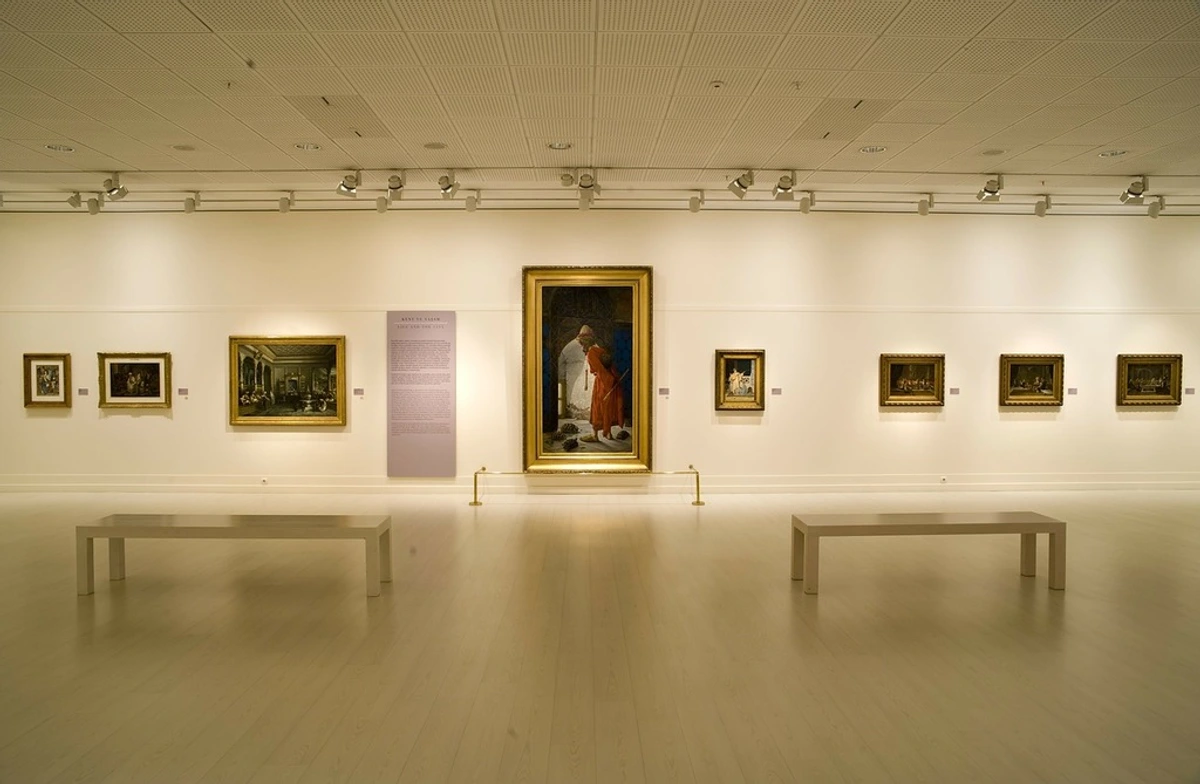
credit, licence
3. Utilize Guided Tours & Audio Guides (Get the Story)
Many institutions offer excellent free or paid tours (docent-led - guided by trained volunteers, curator talks, thematic tours) or audio guides/apps. These provide invaluable context, storytelling, and insights you'd otherwise miss, helping you how to read a painting or understand complex historical backgrounds or artistic techniques. Check languages and availability. Sometimes a good guide can bring the art to life in unexpected ways, sharing little-known facts or perspectives. I often find audio guides helpful for focusing on key pieces, especially when I'm short on time. A really passionate guide can make a dusty old painting feel brand new.
4. Go Beyond Museums (Explore the Ecosystem)
Dedicate specific time to gallery hopping in key districts – maybe pick an afternoon to explore Le Marais or Chelsea. Visit artist-run spaces or non-profits for a different perspective. Seek out public art and street art (consider guided tours for context, especially for street art which can be ephemeral). Attend gallery openings if your timing allows (check listings like NY Art Beat, London Art Opening, etc. – often free wine and interesting people-watching!). Look for local art walks or first Friday/Saturday events in gallery districts – these are great ways to see multiple spaces at once and experience the local scene. Explore art bookstores for unique finds and inspiration. It's in these smaller spaces that you often find the pulse of the current art scene, the artists who are living and working there now. The joy of discovery here, away from the crowds, is immense.

5. Engage Locally (Connect with the Scene)
Visit local cafes near galleries (often where artists and dealers hang out), wander through neighborhoods known for creativity (like Montmartre in Paris, Jordaan in Amsterdam, Shoreditch in London, Vila Madalena in São Paulo), and strike up conversations (if appropriate and welcome) with gallery staff (they are usually knowledgeable and happy to talk about the art), local artists at open studios, or fellow art enthusiasts in queues. Art is deeply connected to its environment and the people who make/show it. You might get the best tips from a local artist or gallerist. I once got an amazing recommendation for a tiny, obscure museum just by chatting with a barista near a gallery. These informal interactions can be some of the most rewarding parts of the trip. Researching local contemporary artists before you go can also give you names to look out for in galleries and studios.
6. Document & Reflect (Process the Experience)
Take notes on artists or works that intrigue you (use your phone or a small notebook). Sketch (where permitted – check policies! Pencil is usually fine, ink/paint often not). Take photos (where permitted, no flash usually) of works that move you or labels for later research. Keeping an "art journal" of your trip helps process experiences and remember details. Reflecting on why you liked (or disliked) something helps solidify your understanding and personal connection to the art, serving as future art inspirations. I always try to jot down a few thoughts right after leaving a museum, before the impressions fade. Sometimes it's just a single word or a feeling. Sketching a detail or a composition can also help you engage more deeply with a piece.

7. Language & Navigation (Don't Get Lost)
While English is widely spoken in major tourist areas and museums, having a translation app (like Google Translate with offline downloads) can be helpful for reading labels in smaller venues, deciphering menus, or navigating local transport. Download offline maps (Google Maps, Citymapper work well in many cities). Learn basic greetings and politeness phrases in the local language – it goes a long way. And seriously, check the public transport maps before you leave your accommodation. Getting lost can be an adventure, but maybe not when you're trying to make a timed museum entry! A little bit of planning here saves a lot of stress. Learning a few art-specific terms in the local language might also enhance your experience, especially in smaller galleries.
8. Check Transport Options & Pack Smart (Be Prepared)
Understand the city's public transport system (metro, tram, bus, ferry). Purchase appropriate travel cards or passes for cost-effectiveness. Factor travel time between neighborhoods into your planning. Some cities are very walkable (Florence); others require significant transit time (LA). Wear comfortable shoes – you'll likely walk miles even if using transport. Seriously, pack your most comfortable pair, you'll thank me later. Consider layers of clothing for varying museum temperatures. A small, portable charger for your phone can be a lifesaver. And maybe a small backpack for water and snacks.
9. Art Etiquette (Don't Be That Person)
- In Museums: No flash photography (it can damage artwork). Maintain a respectful distance from the art (don't touch!). Be mindful of other visitors – don't block artworks for extended periods, keep conversations quiet. Check bag policies – large bags might need to be checked. No food or drink in galleries. Resist the urge to take photos of everything – sometimes just being present is more valuable.
- In Commercial Galleries: It's okay to just look! You don't have to be a buyer. Don't touch the art unless invited. If you have questions, ask the gallerist – they are there to help. Be respectful of the space and the work.
- With Street Art: Appreciate it, photograph it (usually fine), but don't deface it or the property it's on. Be aware of your surroundings, especially in less touristy areas.
Connecting Art Travel with Your Own Art Journey: It's All Connected
Traveling to art cities does more than just provide memorable sights and Instagram fodder; it can profoundly impact your relationship with art, whether you're a practicing artist, a collector, a decorator, or simply someone who enjoys looking. It’s an investment in your own visual literacy and creative spirit. For me, it's fuel. It's seeing what's possible, what's been done, and what's being done now. It makes me want to get back to my studio and make something. Seeing the scale and ambition of historical masterpieces can be both incredibly inspiring and, if I'm honest, a little humbling. It reminds me of my own timeline as an artist, how much there is to learn and explore.
- Refine Your Taste & Discover Affinities (What Moves You?): Exposure to a vast range of styles, periods, mediums (from ancient mosaics to video installations), and cultural contexts helps you clarify your own preferences with greater nuance. Maybe you thought you only liked Impressionism, but seeing powerful German Expressionist works in Berlin resonates unexpectedly. Do you gravitate towards the technical mastery and narrative detail of Old Masters, the emotional punch of Expressionism, the intellectual rigor of Conceptual Art, the immersive nature of installation art, or the vibrant energy of contemporary abstract work, perhaps similar to the pieces available to buy here? Pinpointing these affinities guides future exploration, museum visits, and potential collecting. It helps you answer the question: what truly moves you? It's a journey of self-discovery as much as it is about discovering art. Sometimes seeing art in person can challenge your assumptions or broaden your definition of what "art" can be – maybe that weird installation you saw actually made you feel something.

- Find Deep Inspiration (Fuel for the Soul): Seeing art firsthand is incredibly stimulating, far more than seeing reproductions online or in books. Whether you're an artist seeking creative sparks (color combinations, compositional ideas, new techniques), a designer looking for visual references, a writer searching for narrative prompts, or simply someone wanting to beautify their space, the direct encounter is powerful. It can inform everything from your own creative practice (art inspirations) to practical decisions like how to decorate your home with art. Observing the dedication evident in an artist's life's work, maybe even tracing their timeline through different periods, can also be highly motivating. It reminds you that every artist started somewhere, put in the hours, faced challenges. It makes the whole process feel more human. Seeing different techniques up close – the thick impasto of a Van Gogh, the meticulous detail of a Renaissance master, the layered complexity of a contemporary piece – can directly influence your own creative process and appreciation for materials and methods. It can also help refine your eye for composition, color, and form. Seeing how museums and galleries frame and display work can also offer valuable ideas for how to frame your own art or arrange pieces in your own space.
- Deepen Understanding of History & Technique (See How It's Made): Seeing artworks in their intended settings (like altarpieces in churches, or sculptures in villas like the Borghese) or alongside related pieces provides historical and artistic context that reproductions simply cannot convey. You gain a richer, more embodied understanding of art history (seeing the transition from Renaissance to Baroque in Rome, for example), specific movements, societal influences (patronage, politics, religion), and the evolution of artistic techniques (the development of perspective in Florence, the use of pigments by Dutch Masters, the impact of photography on painting). You might even learn to spot recurring symbolism or narrative conventions you previously missed. You start to see differently. It's like the art unlocks a new way of looking at the world. Seeing art from different cultures and time periods can also broaden one's understanding of the universal human impulse to create.
- Discover Artists (Known & Unknown): Beyond the famous canonical names plastered on museum entrances, art travel opens doors to discovering lesser-known historical figures who deserve attention (female Baroque painters, regional masters) or exciting emerging artists making waves in contemporary galleries or independent spaces. This might ignite a passion for further research or even lead you down the path of collecting work that speaks to you personally, before it hits the big time. Before you purchase, consult guides on how to buy art and the importance of researching artists. It's exciting to feel like you're discovering something, not just seeing what everyone else sees.
- Gain Perspective on Value & the Art World (It's Complicated): Witnessing iconic works held in major public collections, understanding their immense cultural significance, or seeing the context, presentation, and sometimes eye-watering price points in top commercial galleries and auction house previews provides real-world context for understanding art prices and the complex ecosystem influencing artwork value. It helps demystify the art world slightly, showing the interplay between museums, galleries, collectors, critics, and the artists themselves, including navigating the secondary market. It's a fascinating, sometimes bewildering, world to observe. And it makes you appreciate the art itself, regardless of the price tag.
- Consider Conservation and Restoration: While not always publicly accessible, some cities offer glimpses into the world of art conservation and restoration. Seeing the meticulous work involved in preserving masterpieces can give you a new appreciation for the fragility of art and the skills required to maintain it for future generations. It's a reminder that art isn't static; it requires care and expertise to endure. Learning about painting restoration can be particularly fascinating.
Conclusion: Your Artistic Journey Awaits
The world's best art cities offer more than just a collection of artworks; they provide immersive cultural experiences that resonate deeply with the human spirit and showcase the incredible breadth of global creativity across centuries. From the awe-inspiring grandeur of historical masterpieces that shaped civilizations to the thought-provoking, sometimes challenging, dynamism of contemporary creations asking urgent questions about our present, these artistic hubs invite exploration and offer endless opportunities for discovery, learning, and inspiration. By planning thoughtfully, venturing beyond the obvious museum trail to explore galleries, studios, and streets, and engaging actively with the art and its context, your journey to these destinations promises to be an enriching adventure. Embarking on such a journey is not just a trip, but an investment in your own cultural understanding, aesthetic sensibility, and lifelong appreciation of the power and beauty of art. So, which city is calling to your artistic soul first? Go explore, get lost (a little), and let the art move you.




